For the very first time since our trip began, almost 5 months before the events of this post, we are leaving our backpacks behind. This time, we are going to ride. The Shiminami Kaido is Japan’s most famous bike ride and, though it shames me greatly, there was just no way to carry the packs for this one. It’s 70km of paved, road-side trail across the Seto Inland Sea of Japan, spanning 6 small islands with huge suspension bridges to connect mainland Japan in the North with Shikoku Island in the South. According to the brochure, the route is well marked, predominantly flat, and with ample amenities, making the whole endeavor more or less fool proof. And while we could have rode the whole 70km in one day, that sounded awful on rental bikes, so we decided to make it extra easy and take 2 full days to finish the ride. So hold onto your butts, grab your ill-fitting rental helmet, and let’s roll.
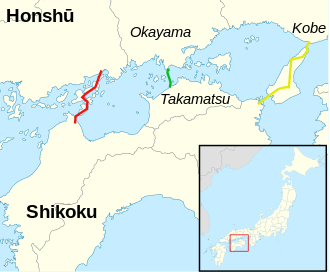

To reach the “trailhead”, it was a half-day’s train ride from Osaka to Onomichi at the Northern end of the path. Once there, we spent the remainder of the day planning and inspecting to get everything arranged. We were deeply confused about the rental bike and luggage transport process, partly because we (incorrectly) assumed the public rental bikes would suck, partly because only certain hostels which accepted luggage were accessible by public transport, and partly because it’s damn near impossible to handle complex planning on a smartphone. Anyways, thanks to the brave translation efforts of the tourist info booth, we eventually decided to go against the internet’s recommendations and ride Southbound (into the sun and potentially into the wind). With (most) everything finally settled, we ate noodles and spent the night in a discount Onomichi hostel.
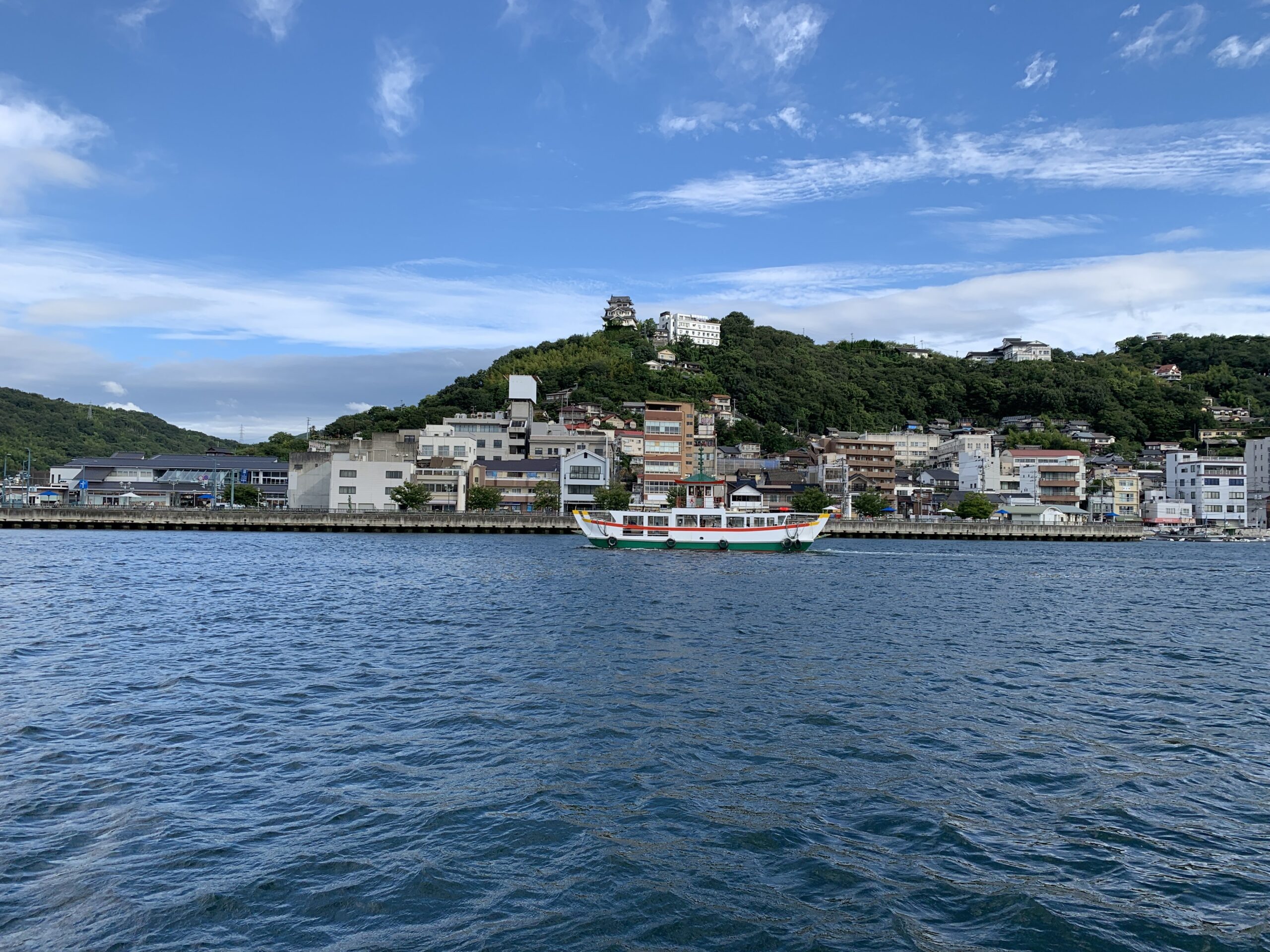
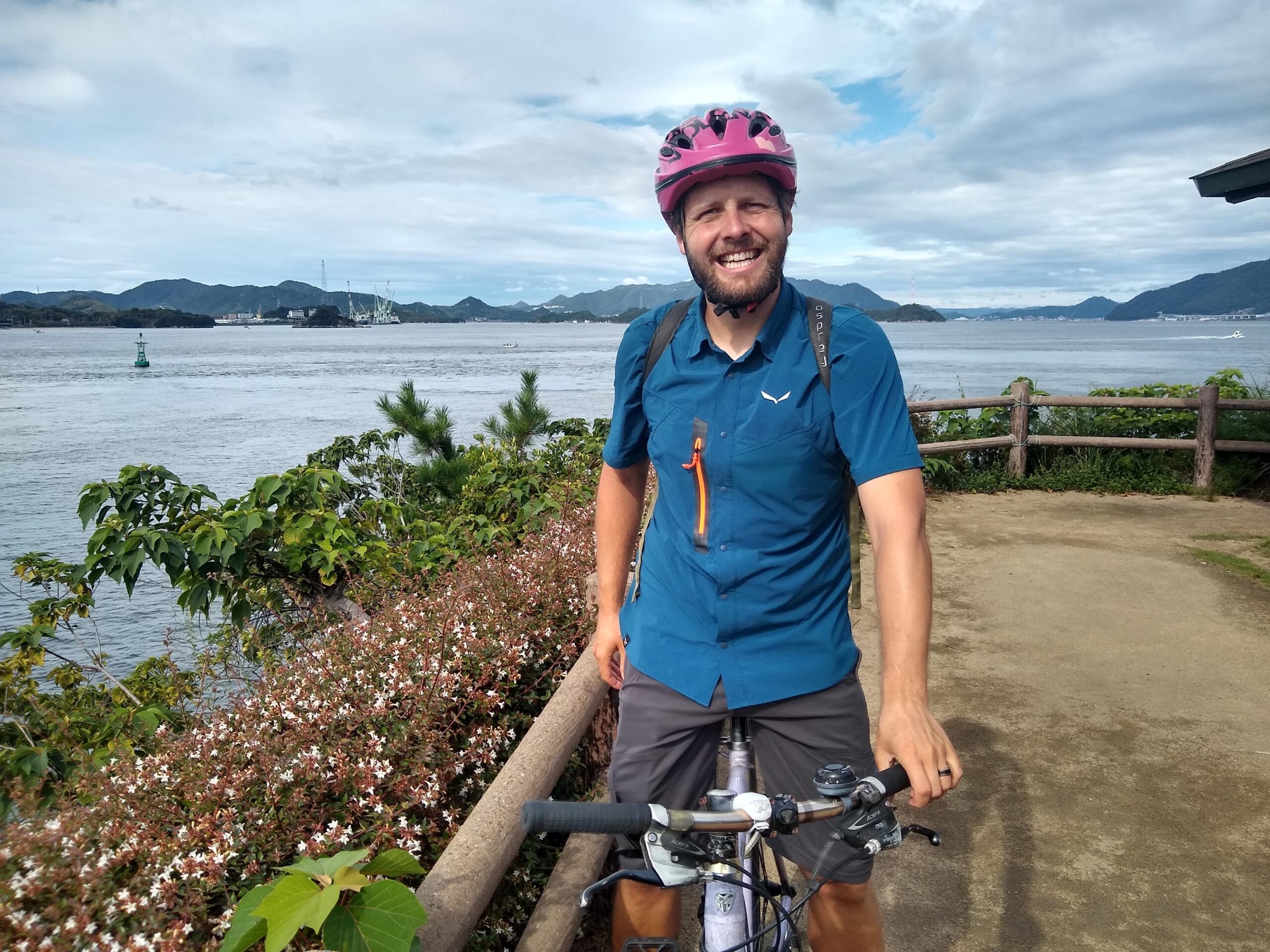
We woke up extra early the next morning to get a good choice of bikes from the first-come-first-serve rental joint. Thankfully, they still had a pink one in stock for Jon along with helmets that approximately fit us both. If this had been a public bike rental in Atlanta we would have been lucky to get fixed gear beach cruisers with square wheels for 10$/day, but in Japan we ended up with well-loved commuter bikes. Satisfied with our ingenuity, we rolled over to the path’s non-intuitive starting point – a very short ferry trip across the sound to the trail’s first island. Apparently, the highway route has no bike lanes and is quite perilous, so one starts with a boat instead.
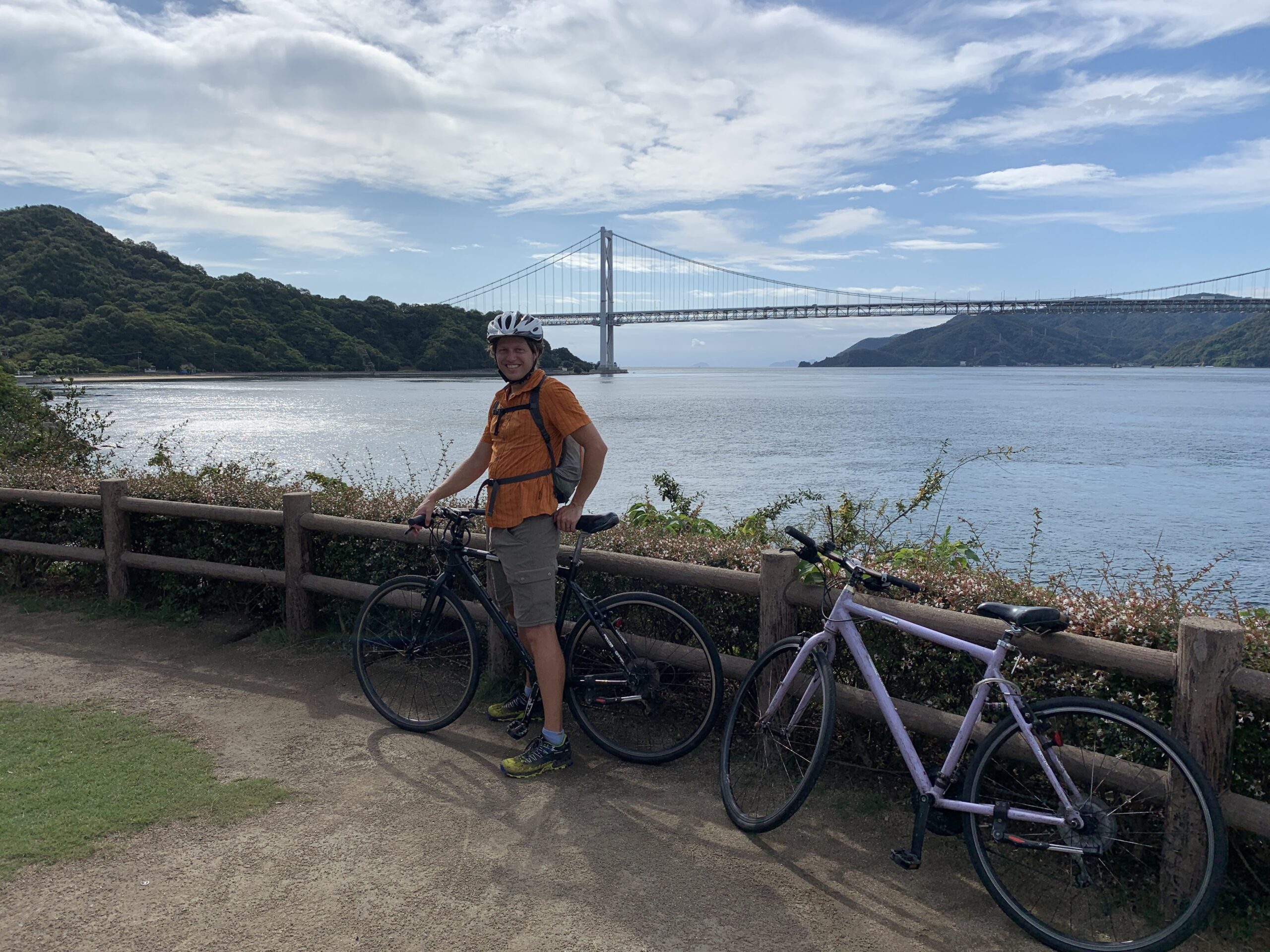
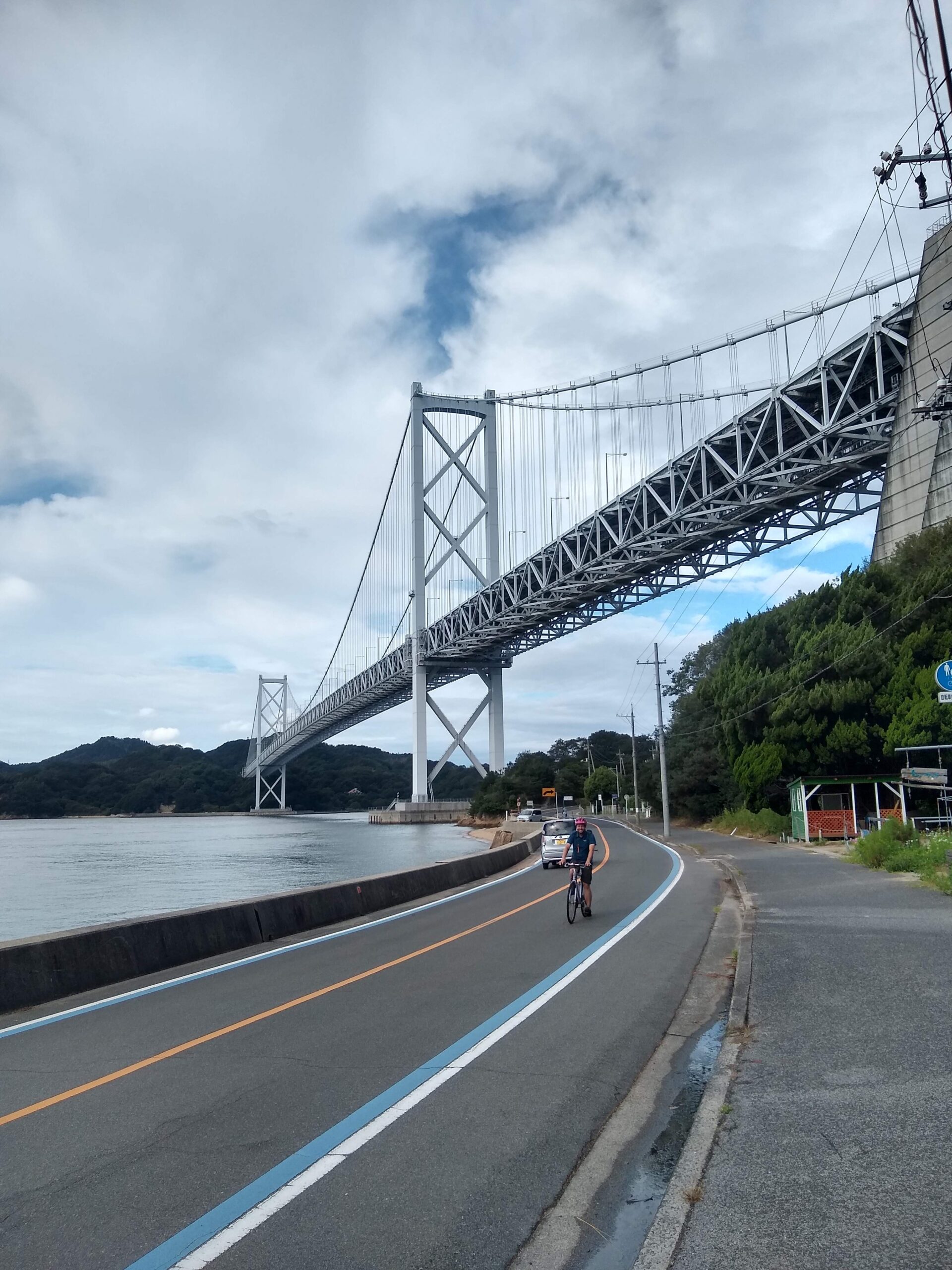
Five minutes on the ferry later, by 8:45am or so, we were cruising our way around the northern side of Mukashima Island and enjoying the coastal view of the Seto Inland Sea. As advertised, the path was well marked and flat. It didn’t take long at all to cover the first 10km and reach our first suspension bridge (of many). The climb up to bridge-height was accomplished by a looping, purpose-built ramp that made the 150ft climb pretty simple, even on rental bikes. Indeed, every suspension bridge turned out to have generous, dedicated bike ramps on either end throughout the trail, and we were again impressed by the quality of Japanese public works.
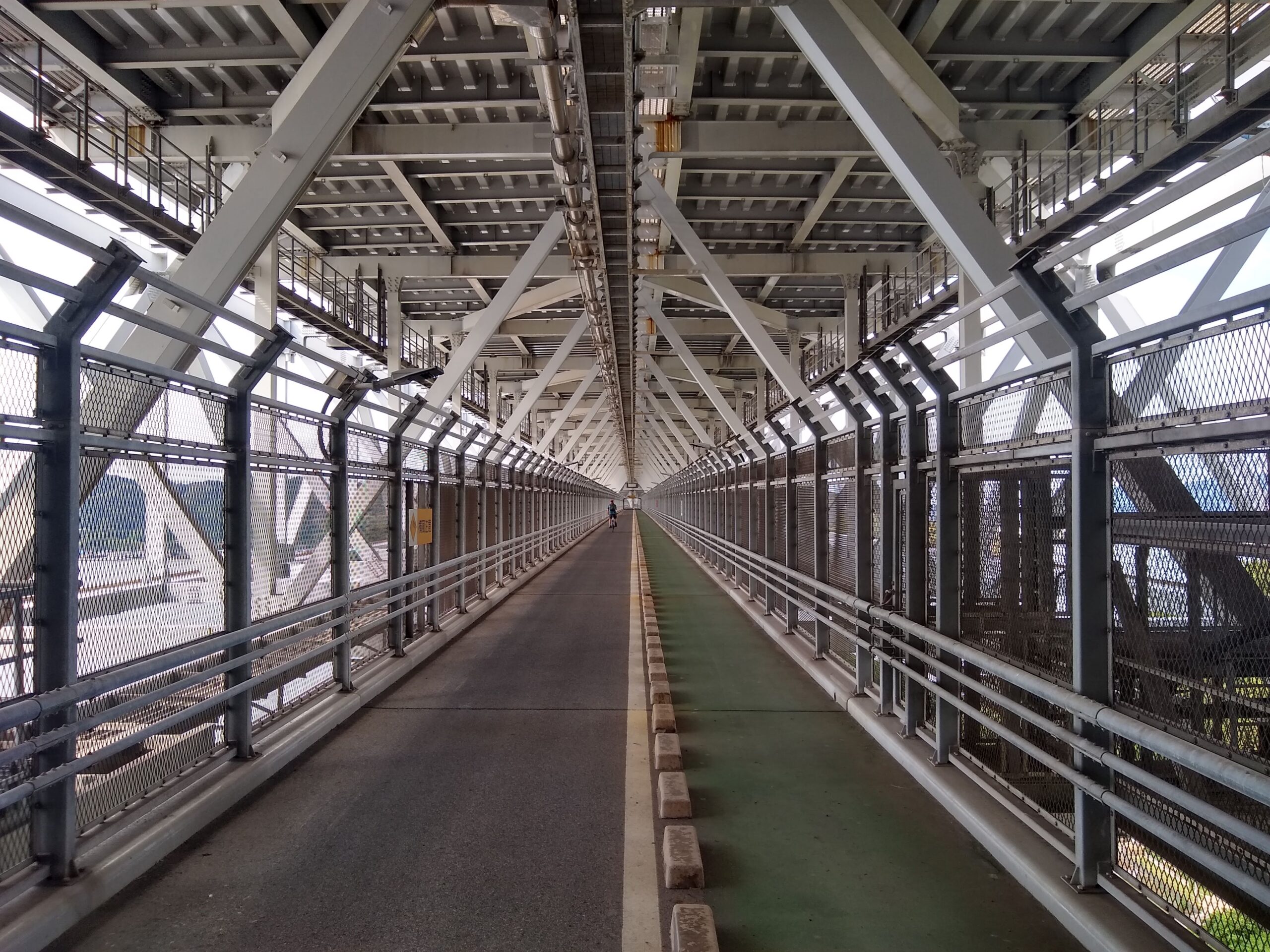
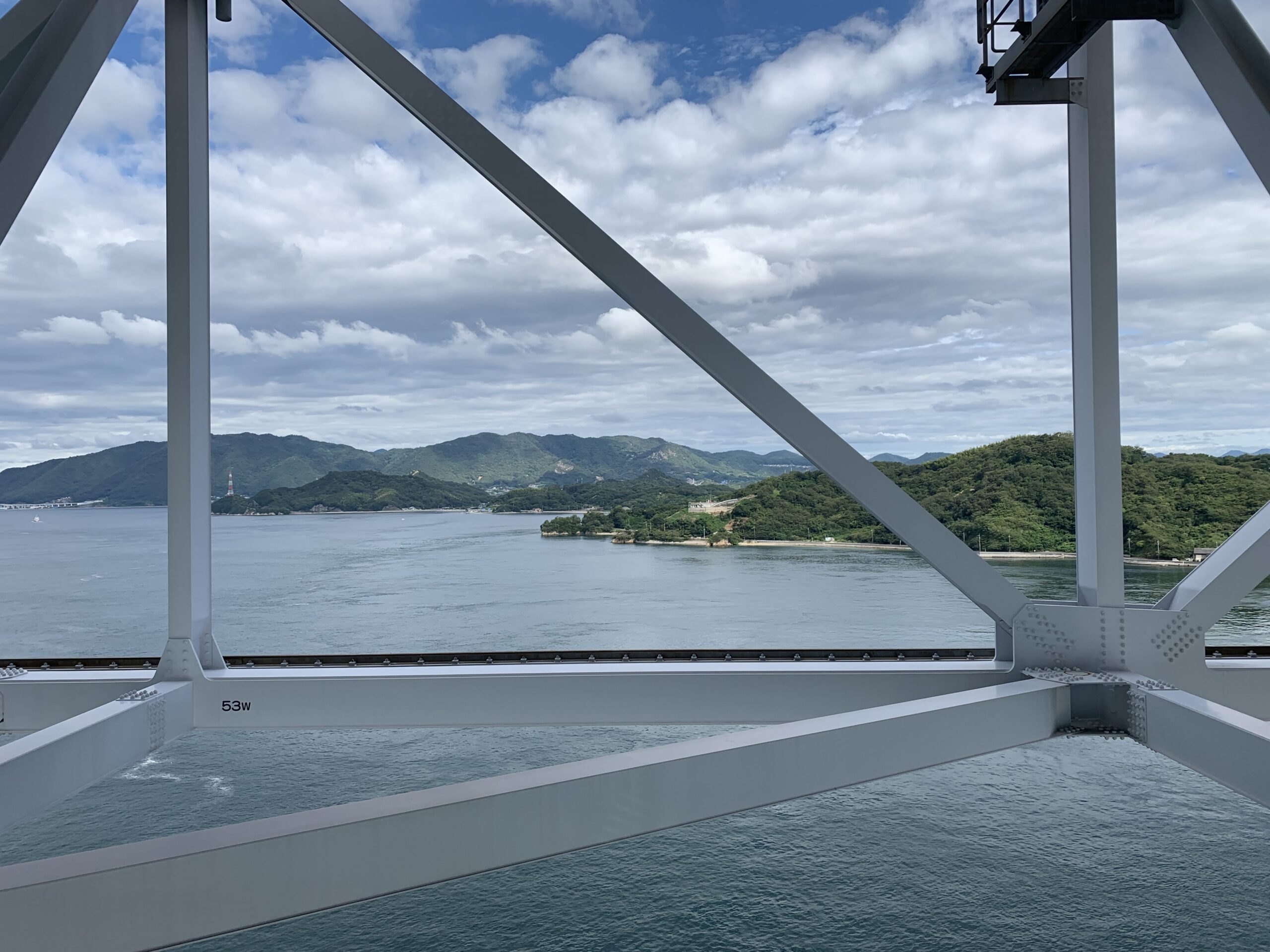
The easy riding and coastal views continued on to the next island, Innoshima, and we decided to take advantage of our ample time table and make a detour up to the island’s “observatory”. We locked our bikes up at the bottom of the hill and set out on foot, just 180 meters to the top. As we approached the summit, we were surprised to find trail closure signs blocking the ascent (and our views). We applied Google Translate to the signs, but they just said “Danger” and “Keep Out”, without further explanation. We had faced plenty of washed out trails before, and we couldn’t imagine what other peril could await us on a beautiful September day. Confident we could handle it, we edged around the barriers and climbed up anyway.
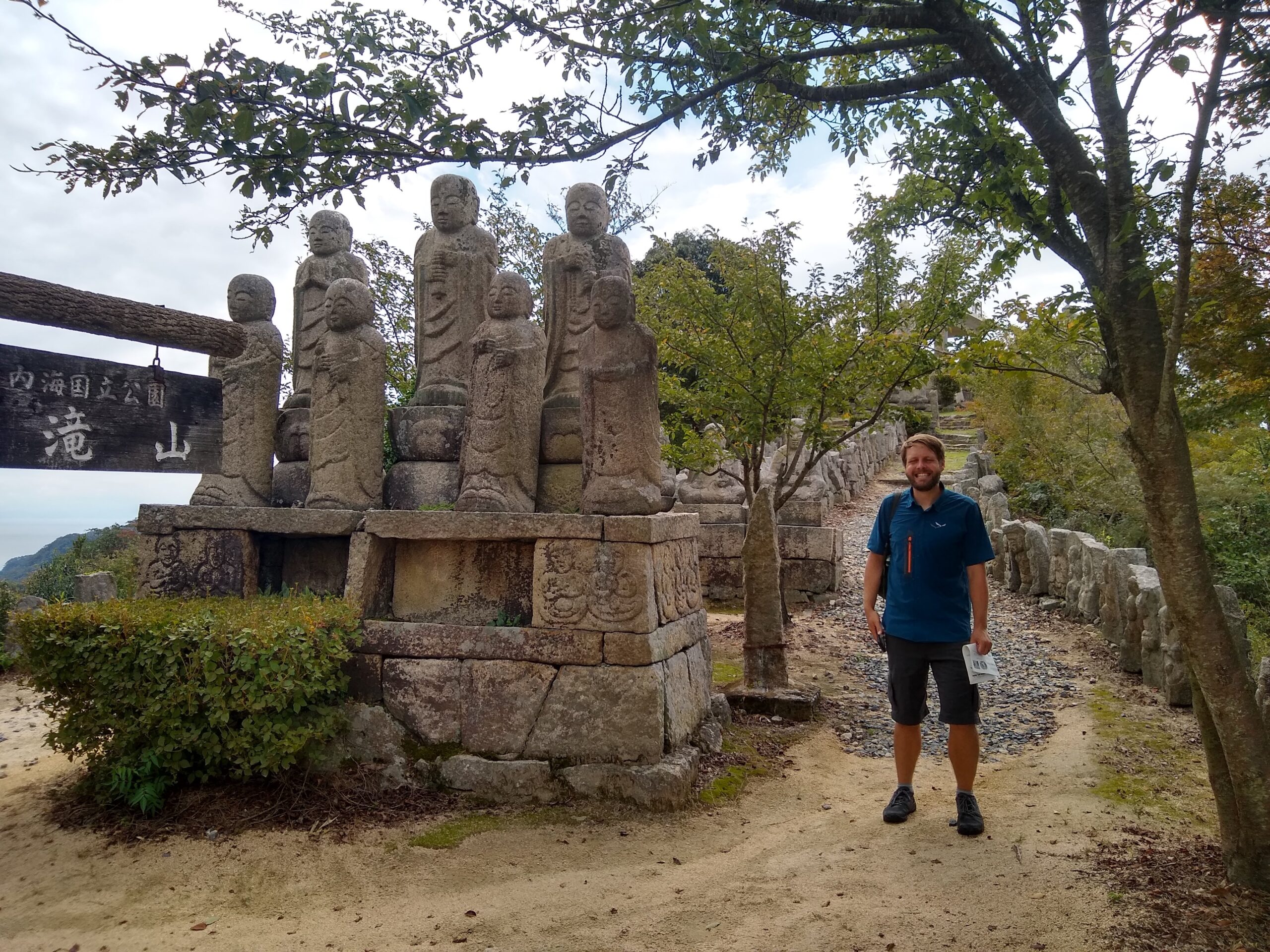
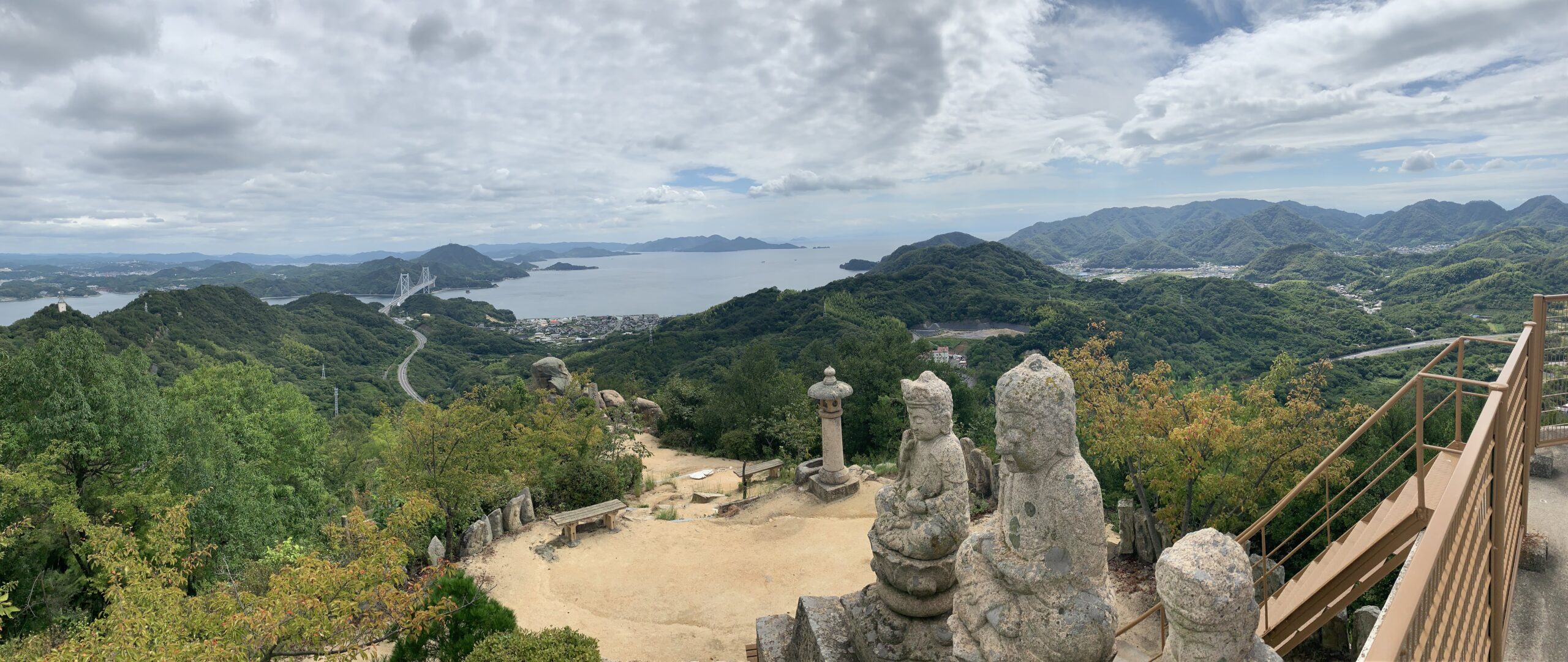
We made the final approach rather cautiously, but encountered nothing remarkable at all until we reached the “observatory”, which was in reality a Shinto shrine, where we were greeted by a surprised caretaker. He was kind enough not to shoo us away, and instead he revealed the actual danger. Not some triffling trail erosion, as it turned out – he showed us Asian Giant Hornets, AKA “Murder Hornets”, caught in a poison trap. The name might be a bit sensational, but the up close reality is horrifying. Equipped with a full 3in wingspan and an almost comically oversized stinger, they are notorious pests for the extreme pain caused by their sting – not to mention being hard to kill and aggressive.
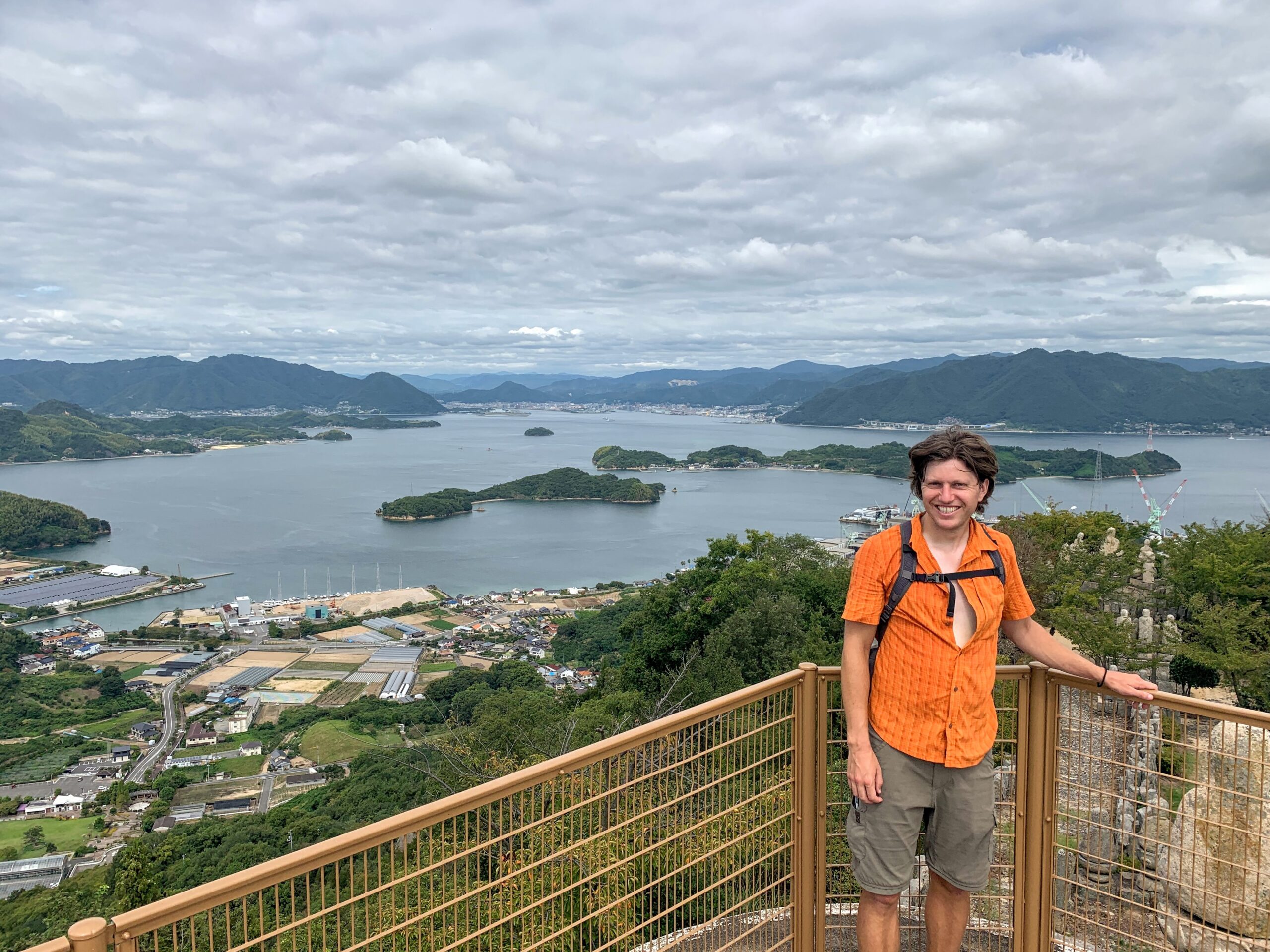
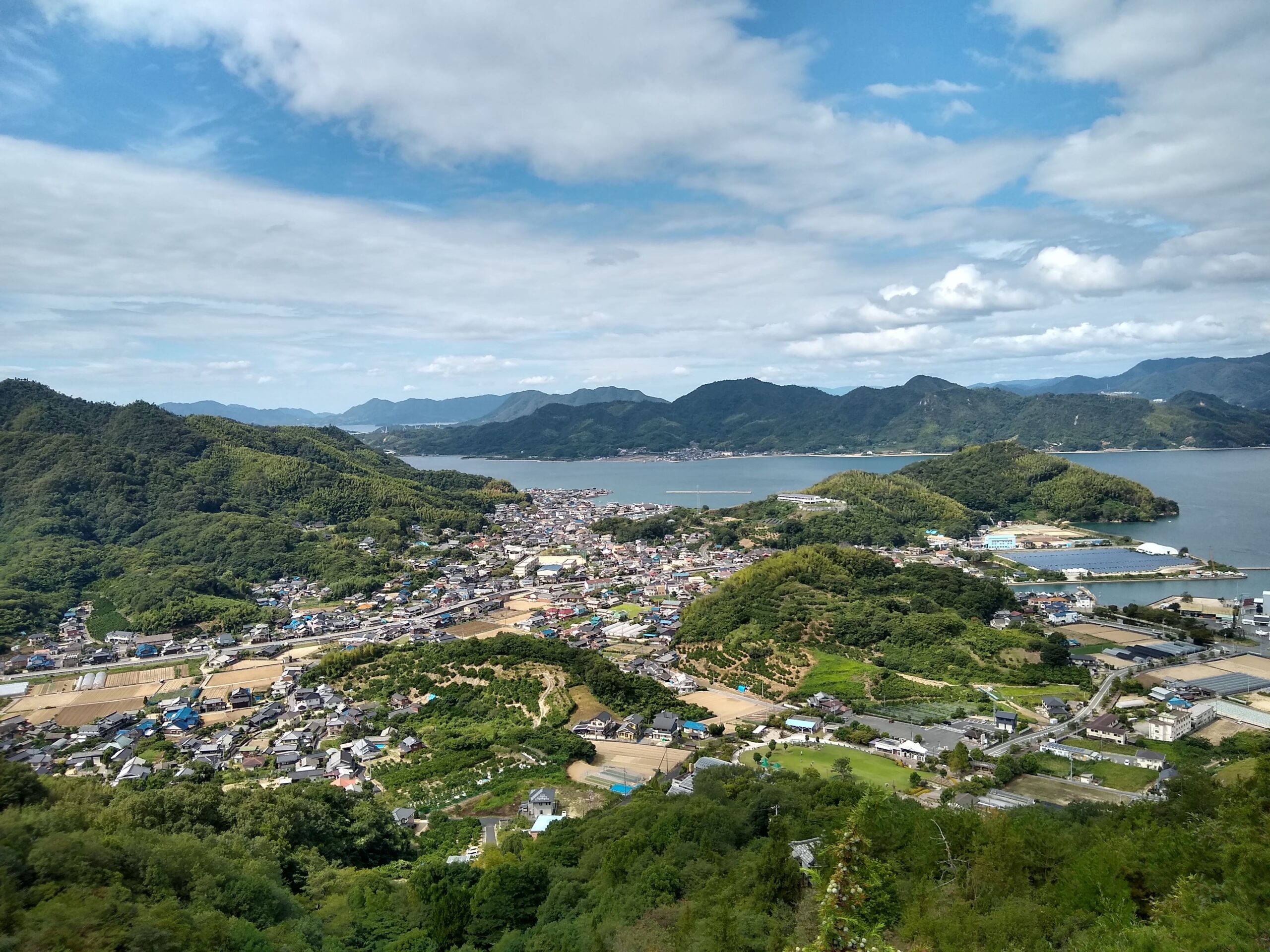
Very carefully and very quickly we went out to the observatory platform and took some pictures, but we were so paranoid about hornet attacks that we soon fled back down the hill. Of course, by the time we made it back down to the “Danger” signs, then we started to see Murder Hornets buzzing all over the place. As sightings and panic mounted we realized the true peril of our situation, and it wasn’t long before we were literally flapping our arms around and squealing as we ran down the mountain. I’m certain the hornets just casually went about their business, except to spare us a moment of pity.
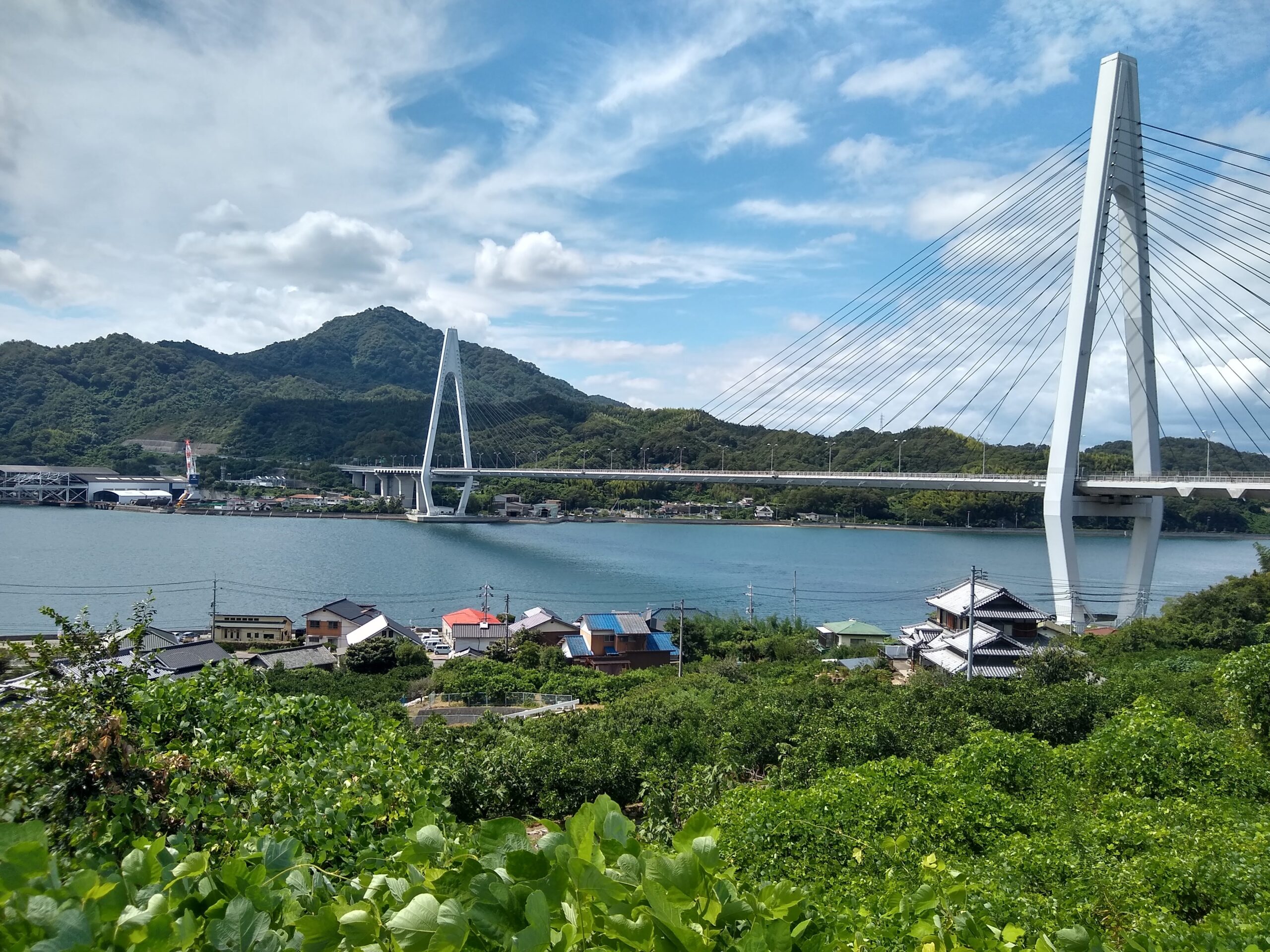
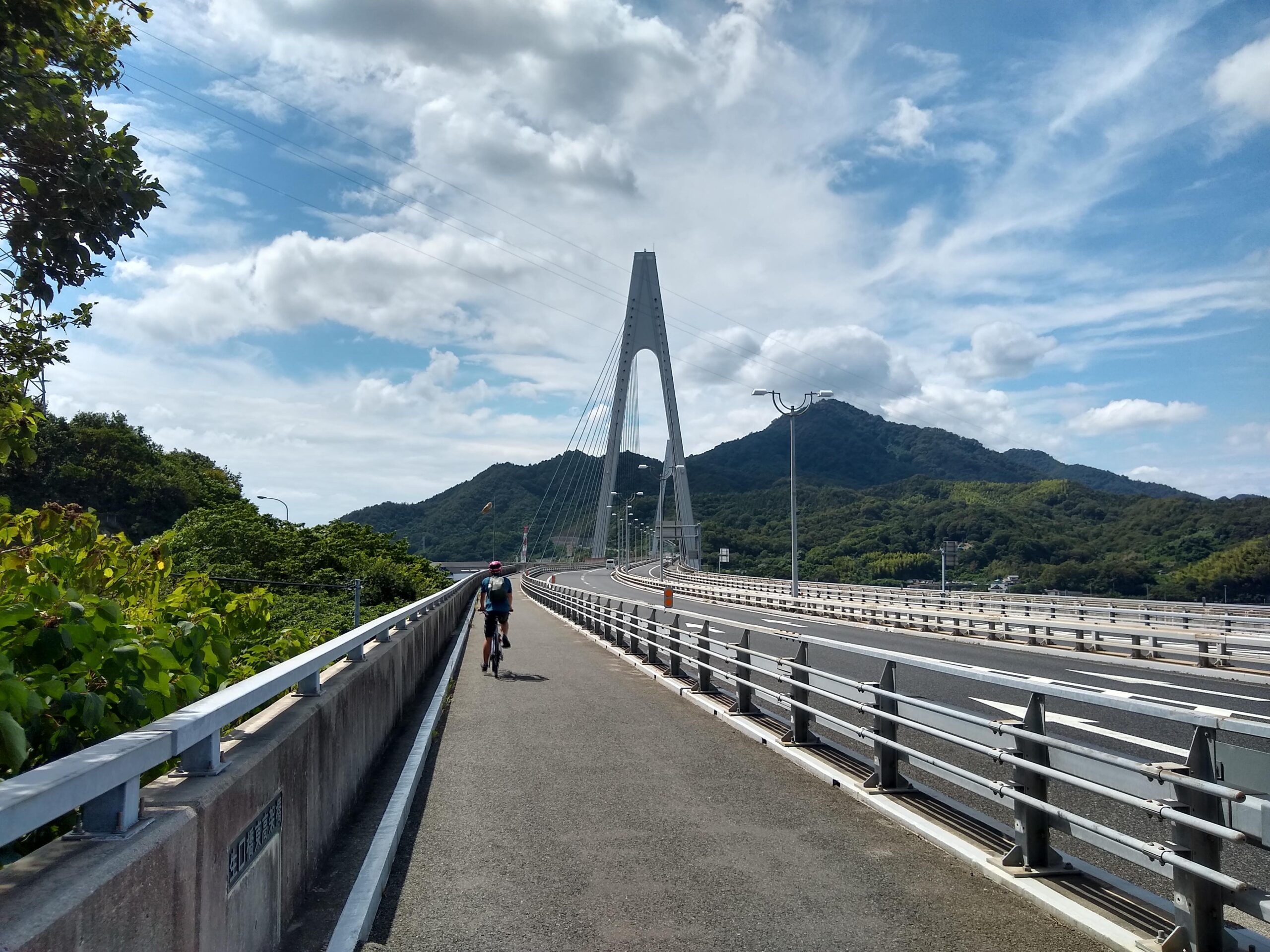
Before long we were back on the road and putting Innushima behind us. After a brief stop for a gas station lunch, the coastal views and soaring suspension bridges continued uninterrupted onto the final (and most famous) island of the day, Ikuchijima.We followed our brochure into the little port town of Setoda to the only interesting attraction listed, Kosanji Temple. We anticipated yet another interesting, but brief, temple attraction, and didn’t realize until we arrived that Kosanji was that infamous Temple. In short, Kosanji was built into the 1930’s by an ultra-wealthy Japanese businessman who “found Buddha” late in his life. Unironically, he used his vast fortunes to create fully functioning replicas of famous Buddhist structures from all over Japan, then had it all lavishly decorated and arranged, and finally punctuated the whole complex with an enormous marble sculpture garden and extensive cave complex packed full of Buddha’s.
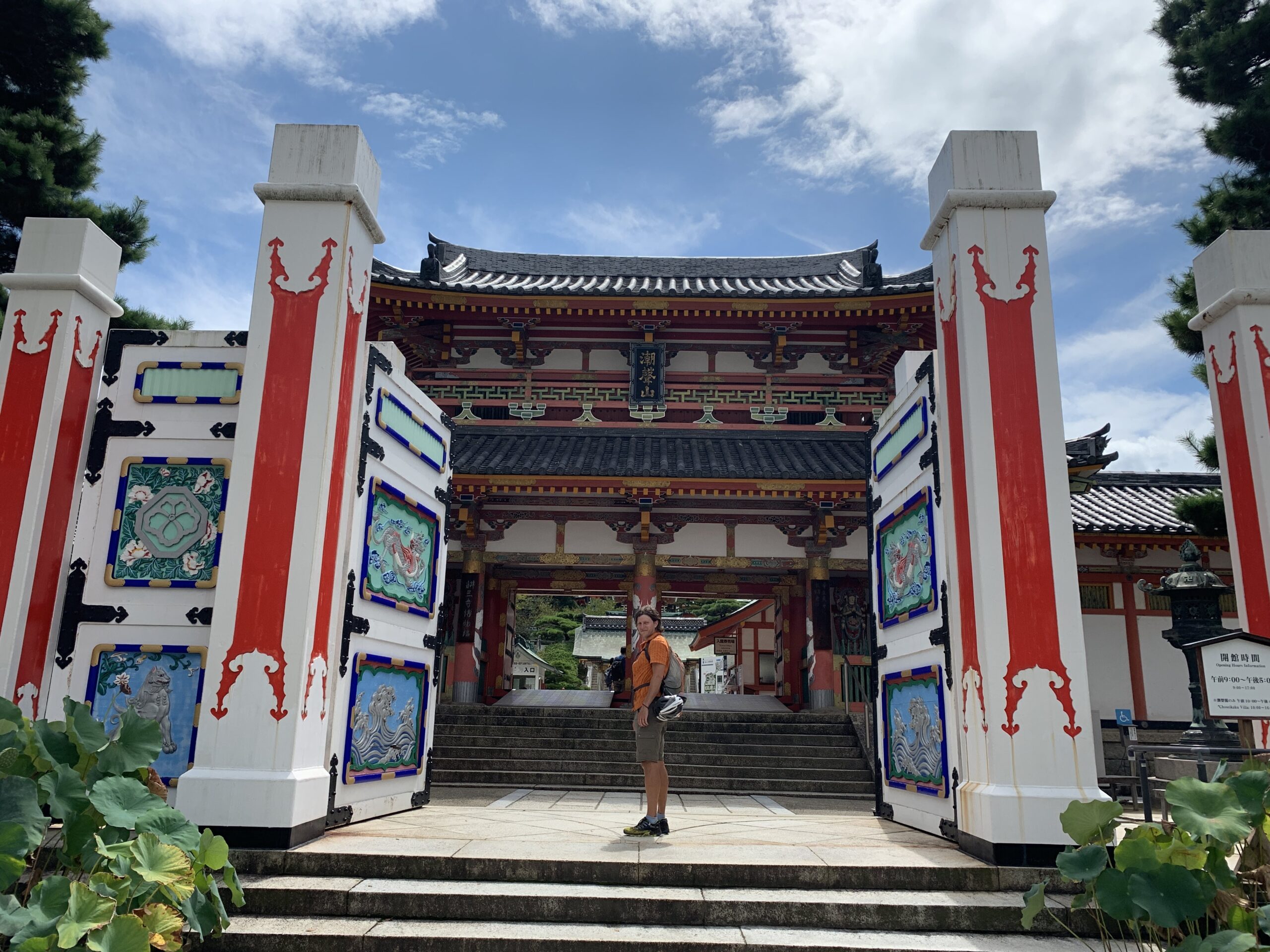
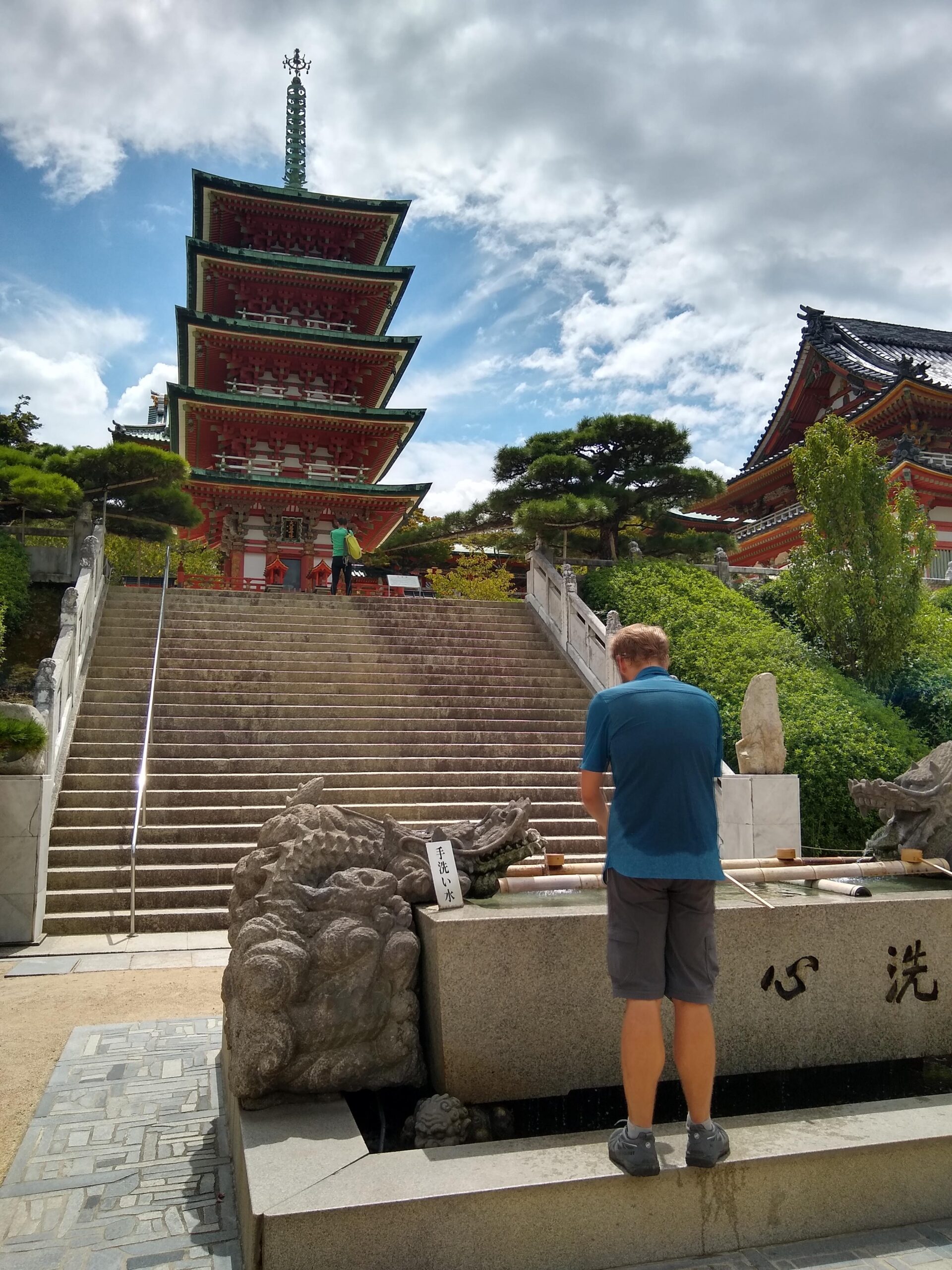
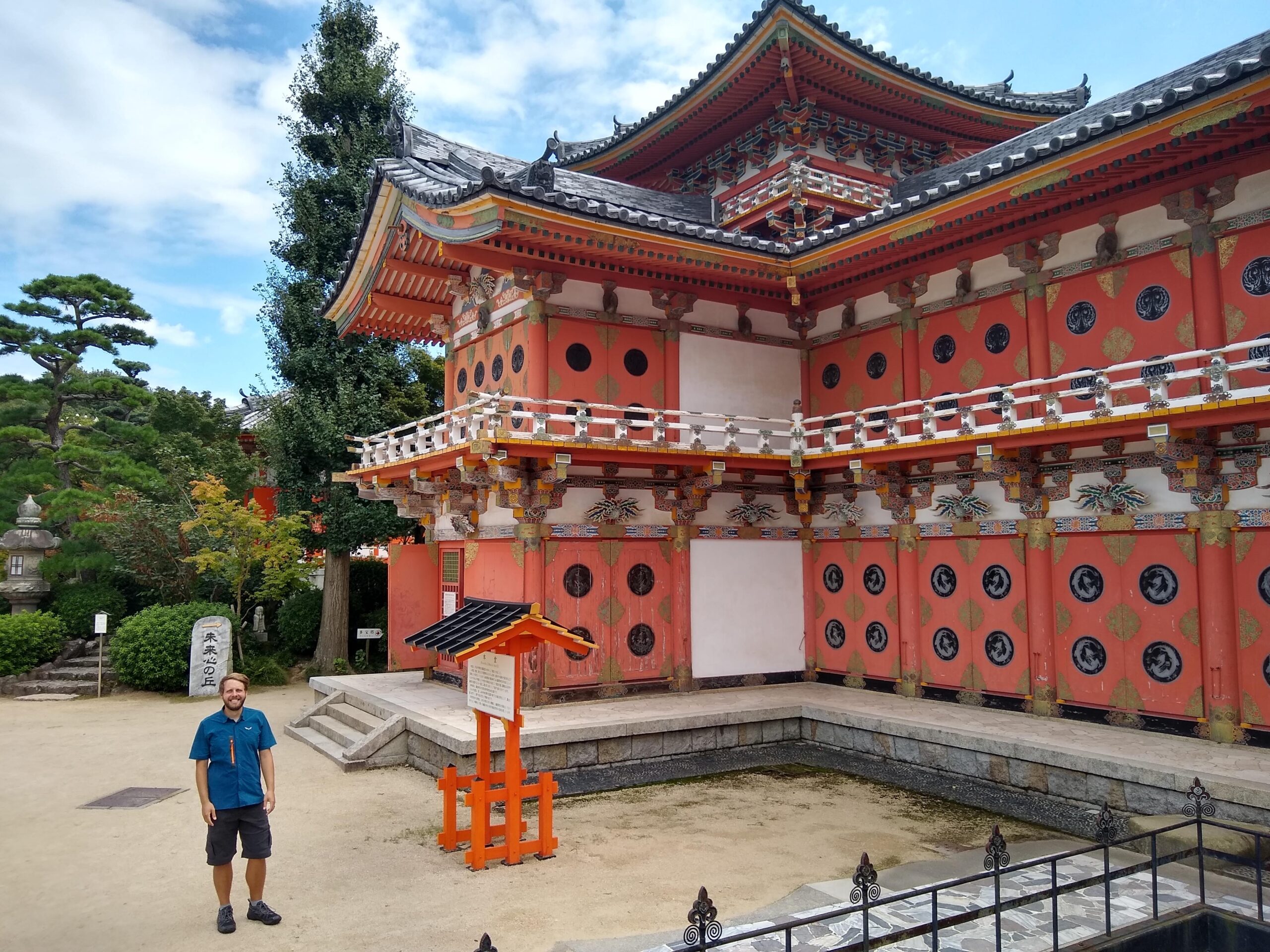
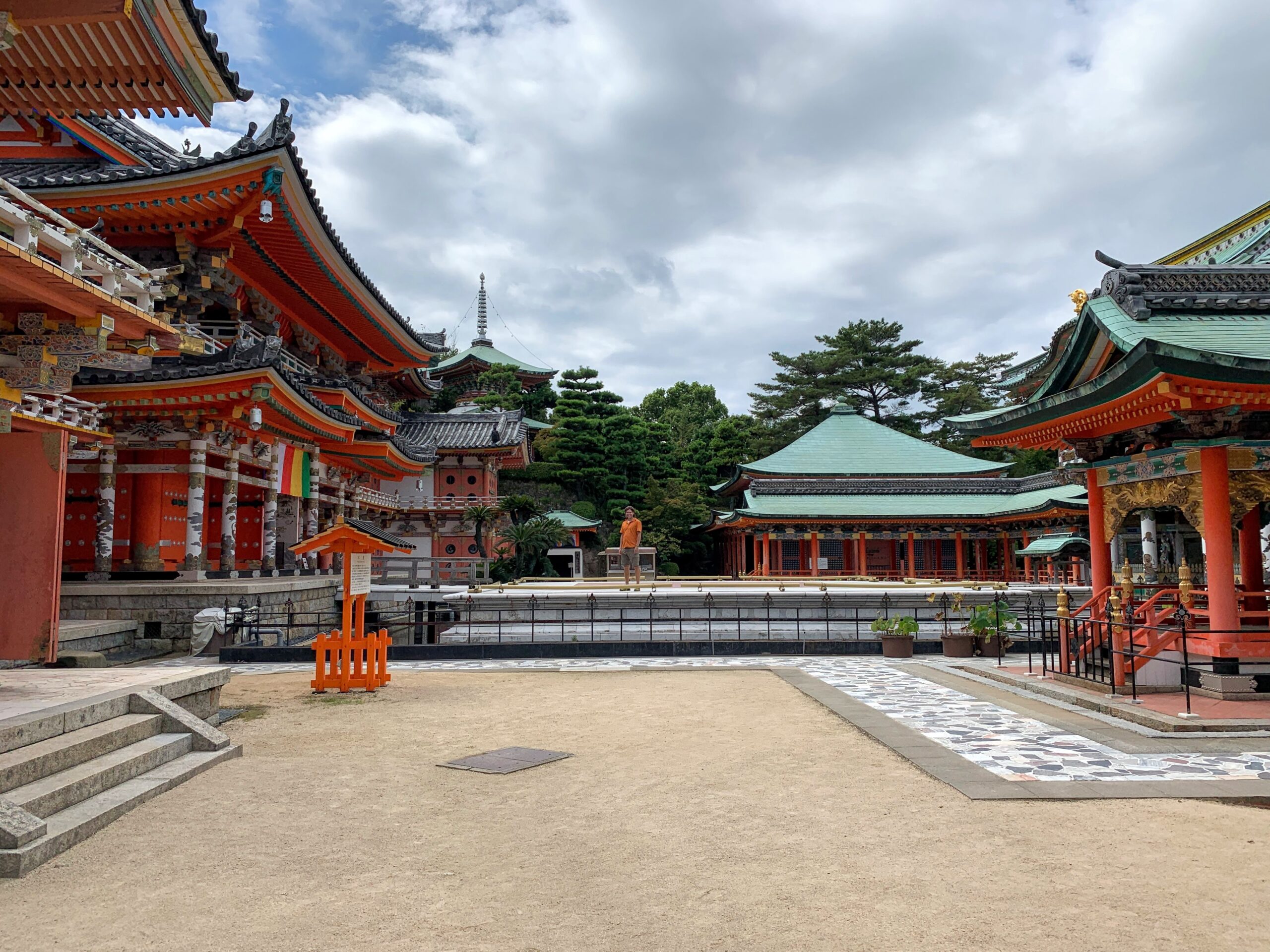
After he died, the elaborate temple complex wasn’t really accepted as a sincere religious site and it fell largely into disrepair. Eventually, it was bought up and converted into a private museum alternatively known as “Buddha Land” for it’s rather garish recreation of holy Buddhist works. Anyways, it’s all great fun to visit since you can get close to ancient-looking Buddhist art without any of the same security that would be present at the real thing. In the marble garden, some misguided Japanese reporter asked to take our picture at the summit and we pretended to be posing for an album cover. In the cave, which we obviously called “the cave of a thousand Buddhas”, we cooled off and learned about cartoon Buddhist Hell. I even got to ring the huge brass bell in the courtyard!
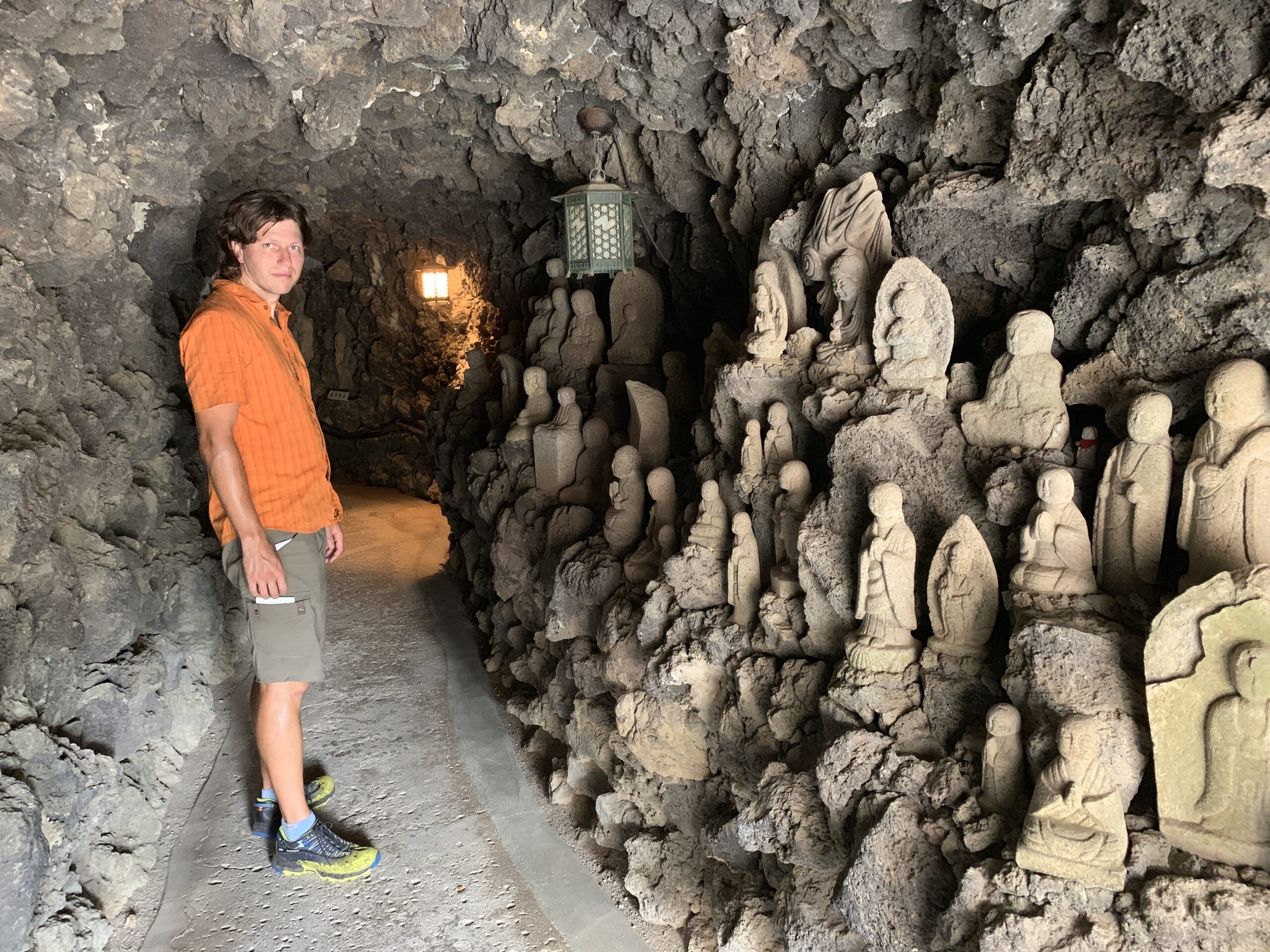
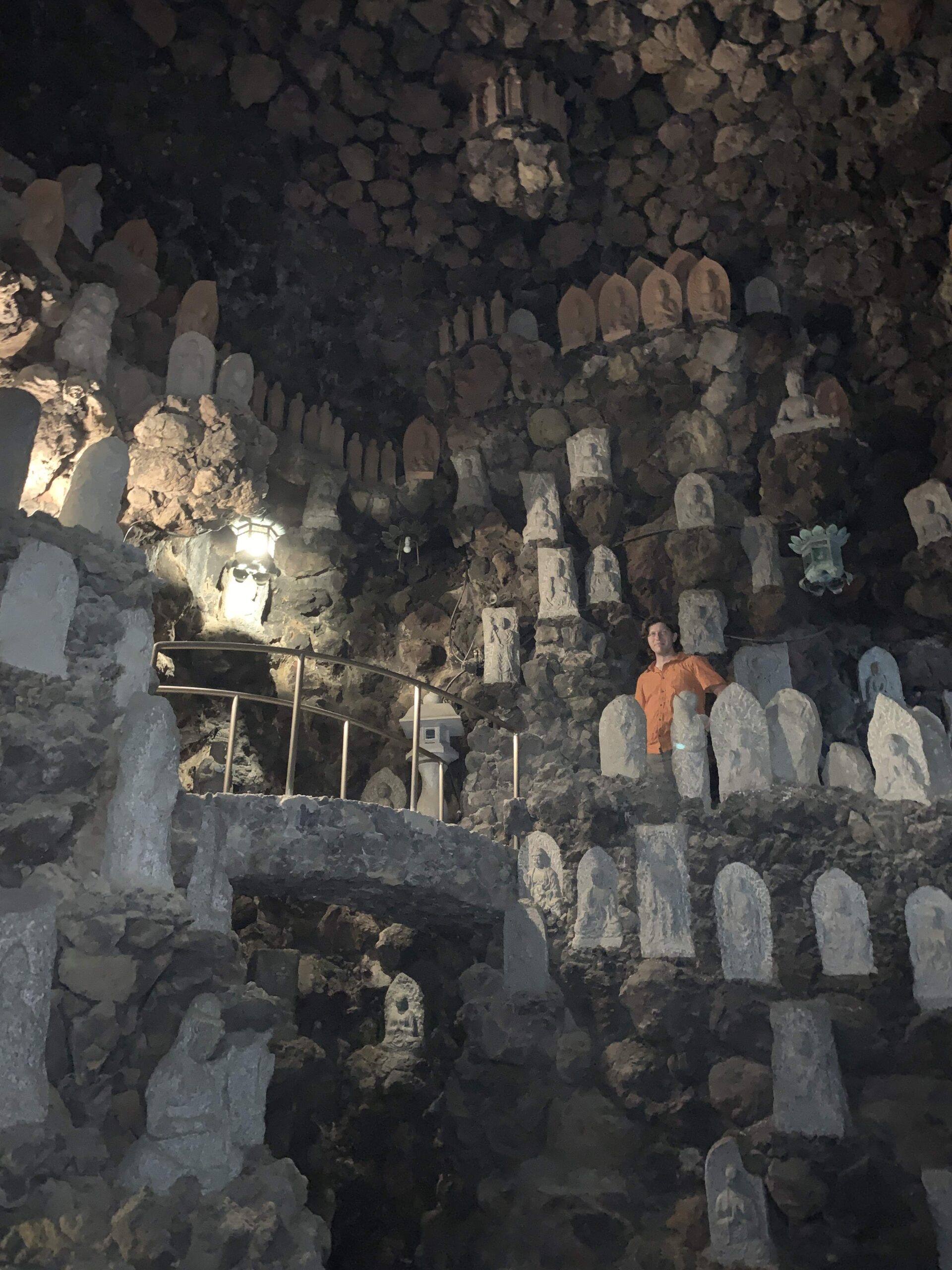
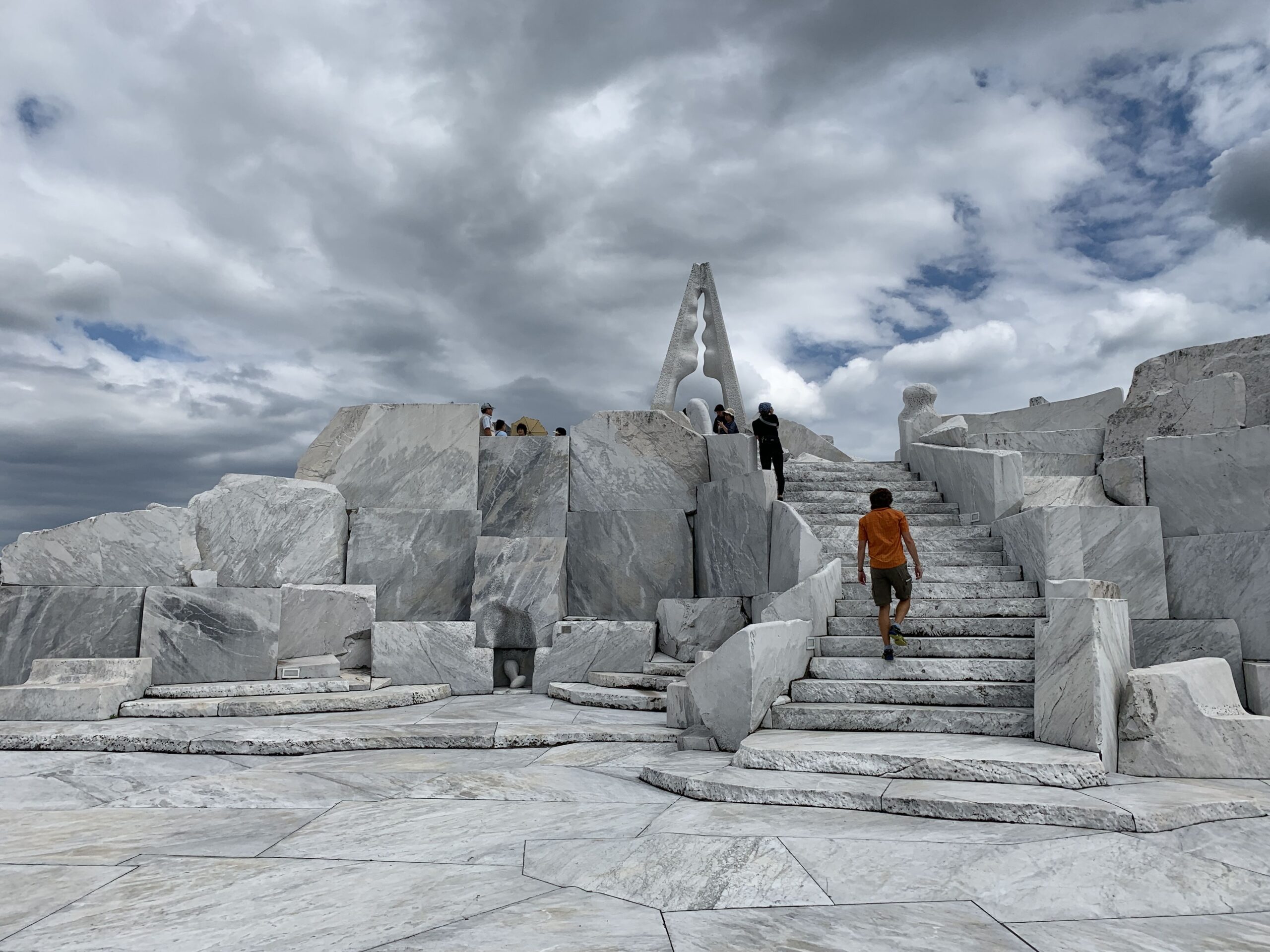

Can you believe this is all one day? Anyways, hours later we got back on our bikes and rode the last few miles to Setoda Sunset Beach, rumored to be aptly named. Our little hostel was completely empty except for us, and the owners were kind and generous with their meals (even if we didn’t understand the contents). Jon found a tick on his butt in the onsen, but fortunately the hostel owners saved us by producing little tweezers for me to perform surgery. That night the sunset proved to be merely OK, though our standards at this point are pretty high. In the morning it was back to riding!
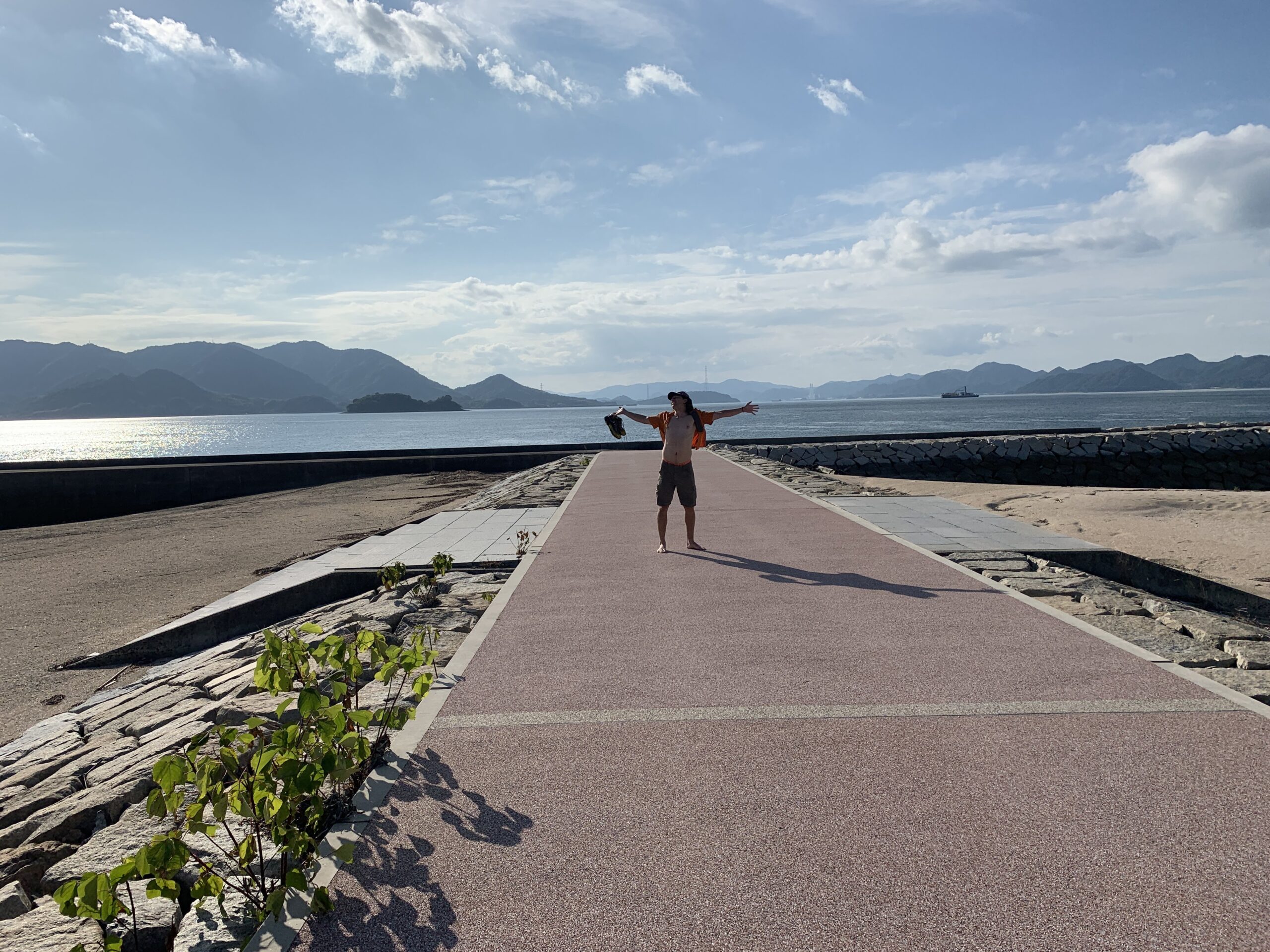

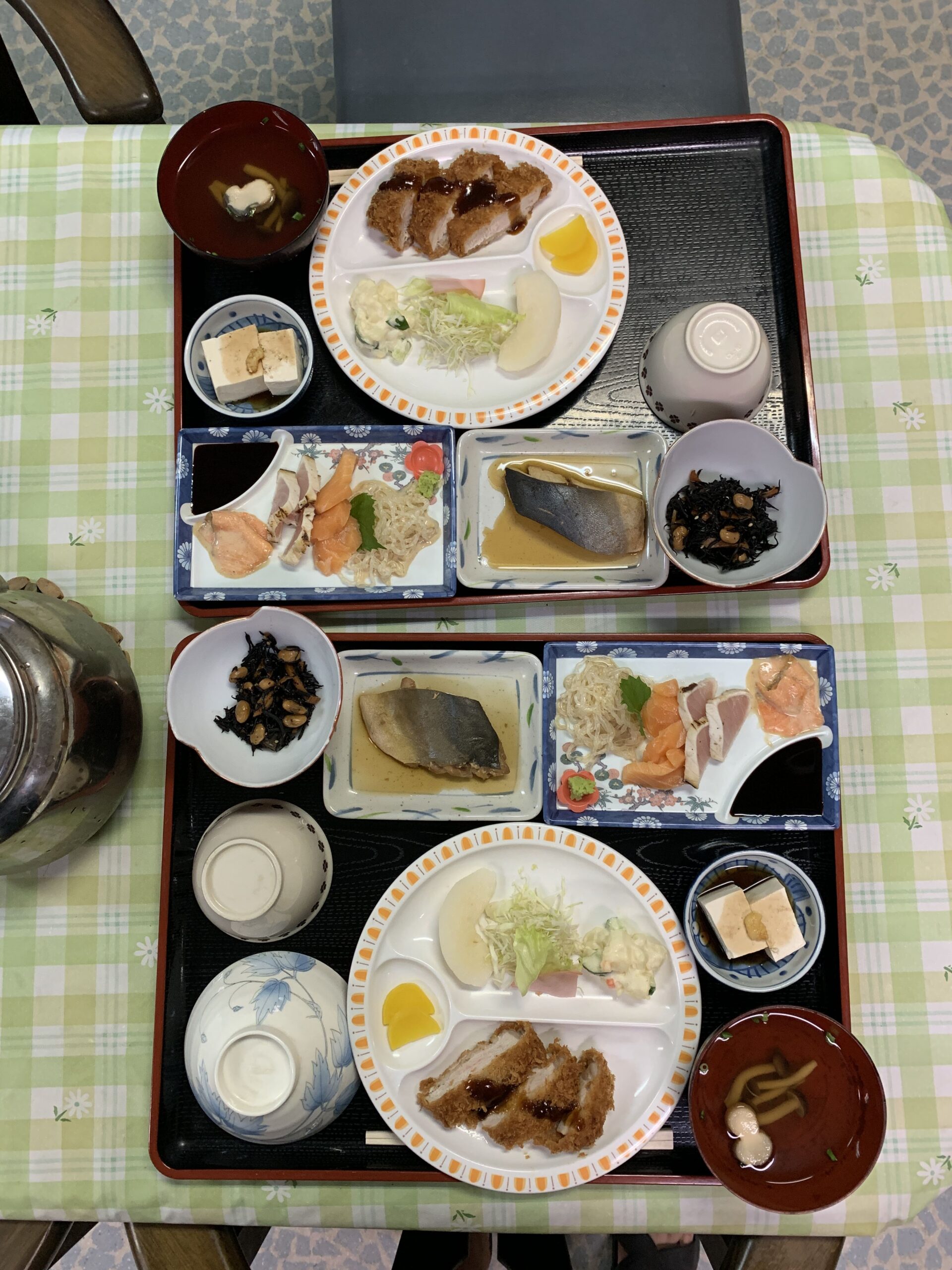
Day two was far less eventful. We were feeling so good we decided to be ambitious and detour around the “intermediate route” on the final island, Oshima. The detour was dramatically more difficult in terms of pedaling and a few miles longer, but the sweet views we hoped to gain for our efforts never materialized. Nevertheless, the weather remained fabulous and it was hard to be too disappointed. We generally found the little sea-side villages to be sleepy and cute, but they completely lacked tourist or community services so there was little to make us stop. Despite the headwind, we covered the remaining 30 or so miles by early afternoon.
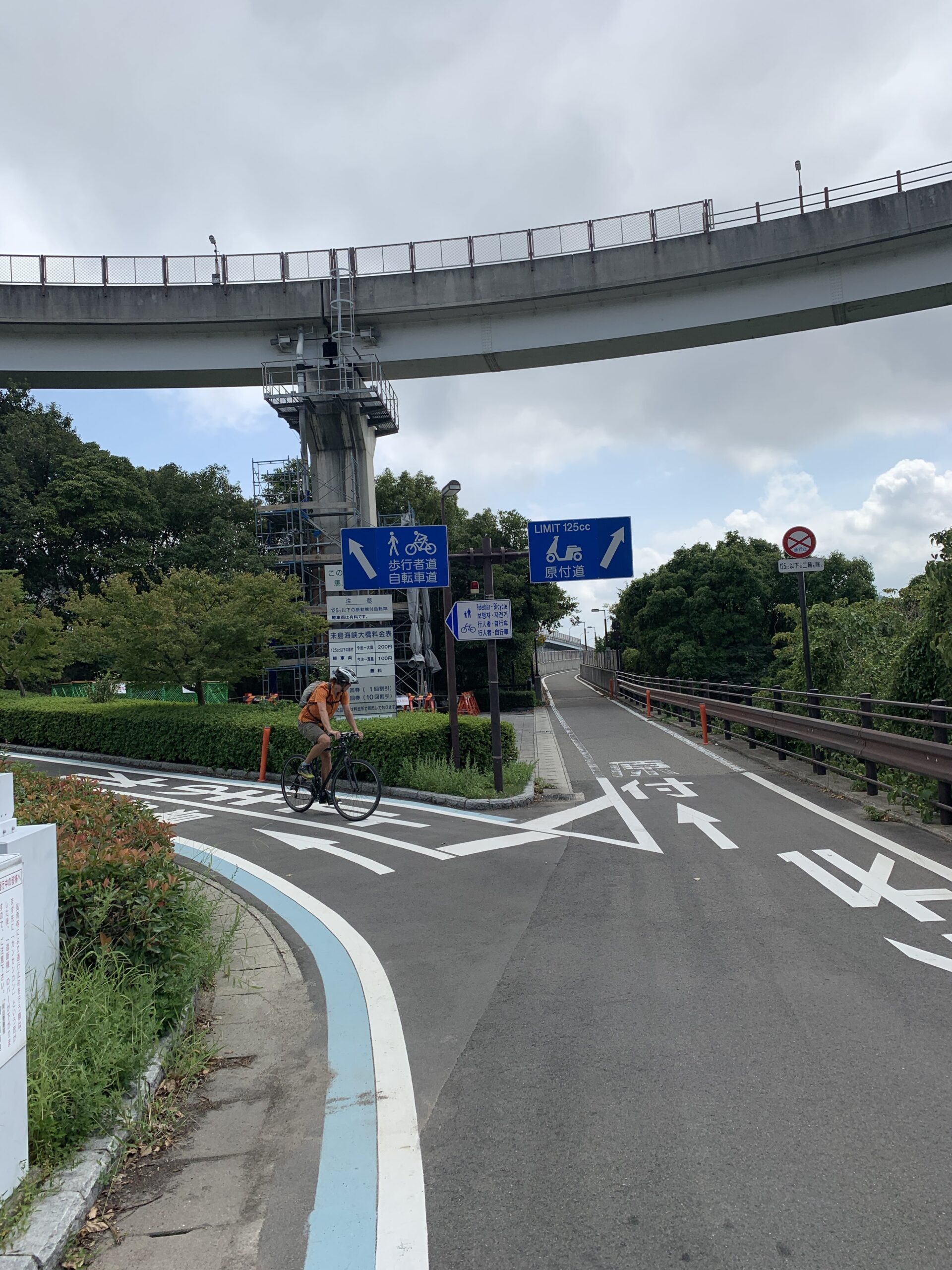

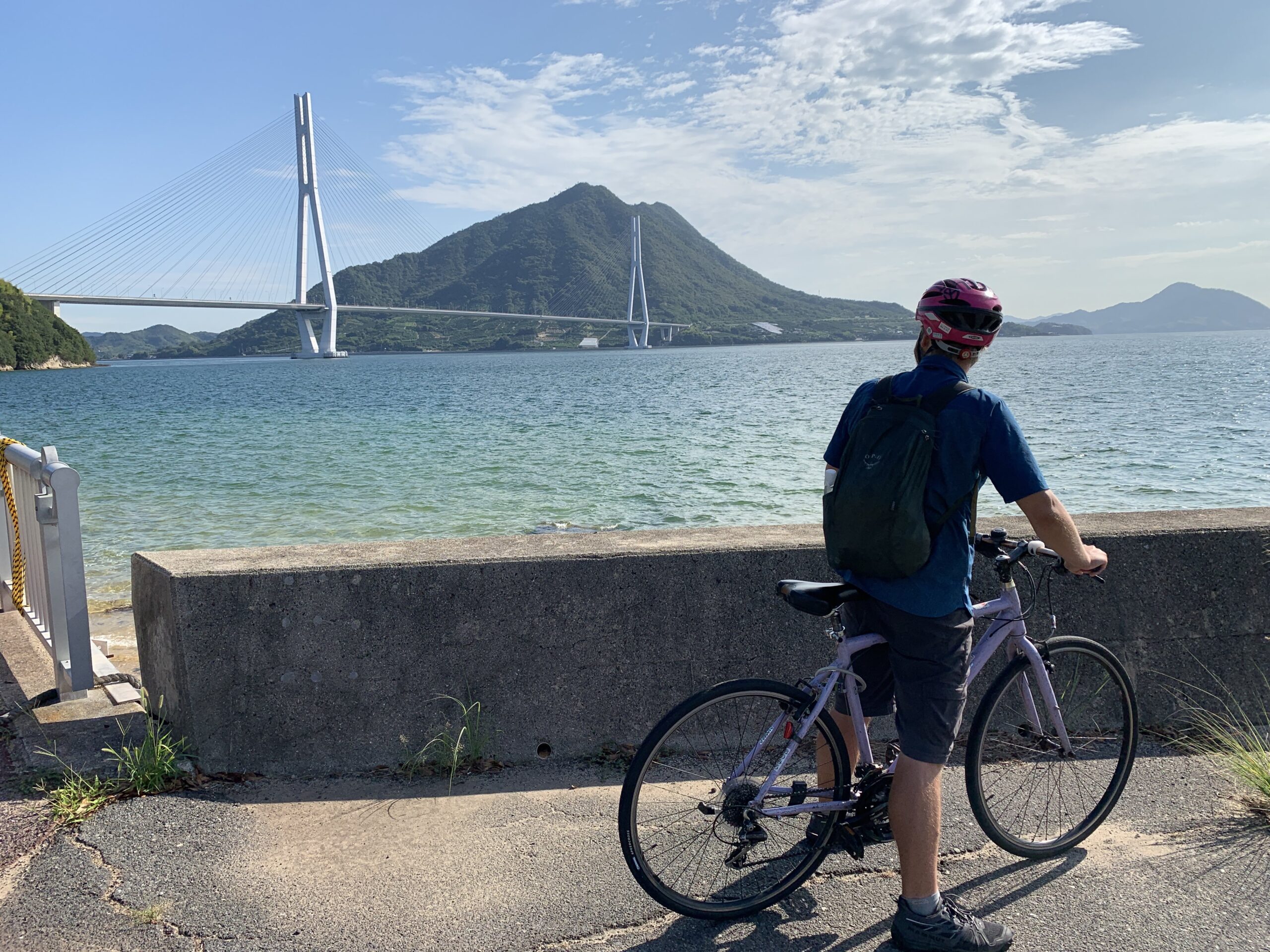

Tired and sunburned, we lazed around on the beach before crossing the final bridge, but various sources had recommended against swimming in the water due to pollution. As we watched the tankers and freighter’s process across we could believe it, so we only got out feet wet. At last we gathered up the strength to cross the might Kurushima Kaikyo bridge, which I only mention by name because it is the longest suspension bridge on Earth at just over 13,000ft (2.5 miles) long. The span between the arches is truly enormous, though it’s really only impressive from a distance – it’s impossible to appreciate the scale while riding over.
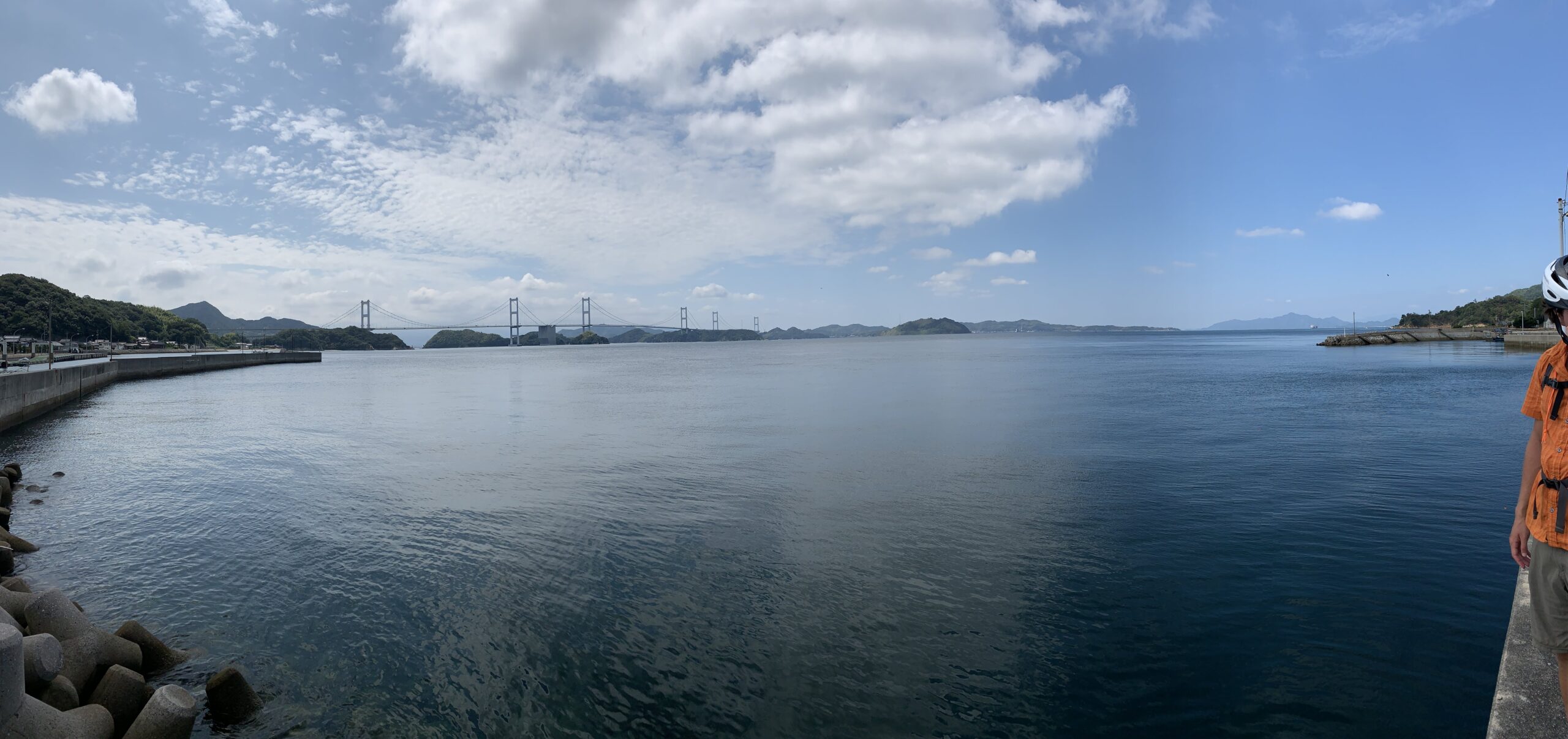
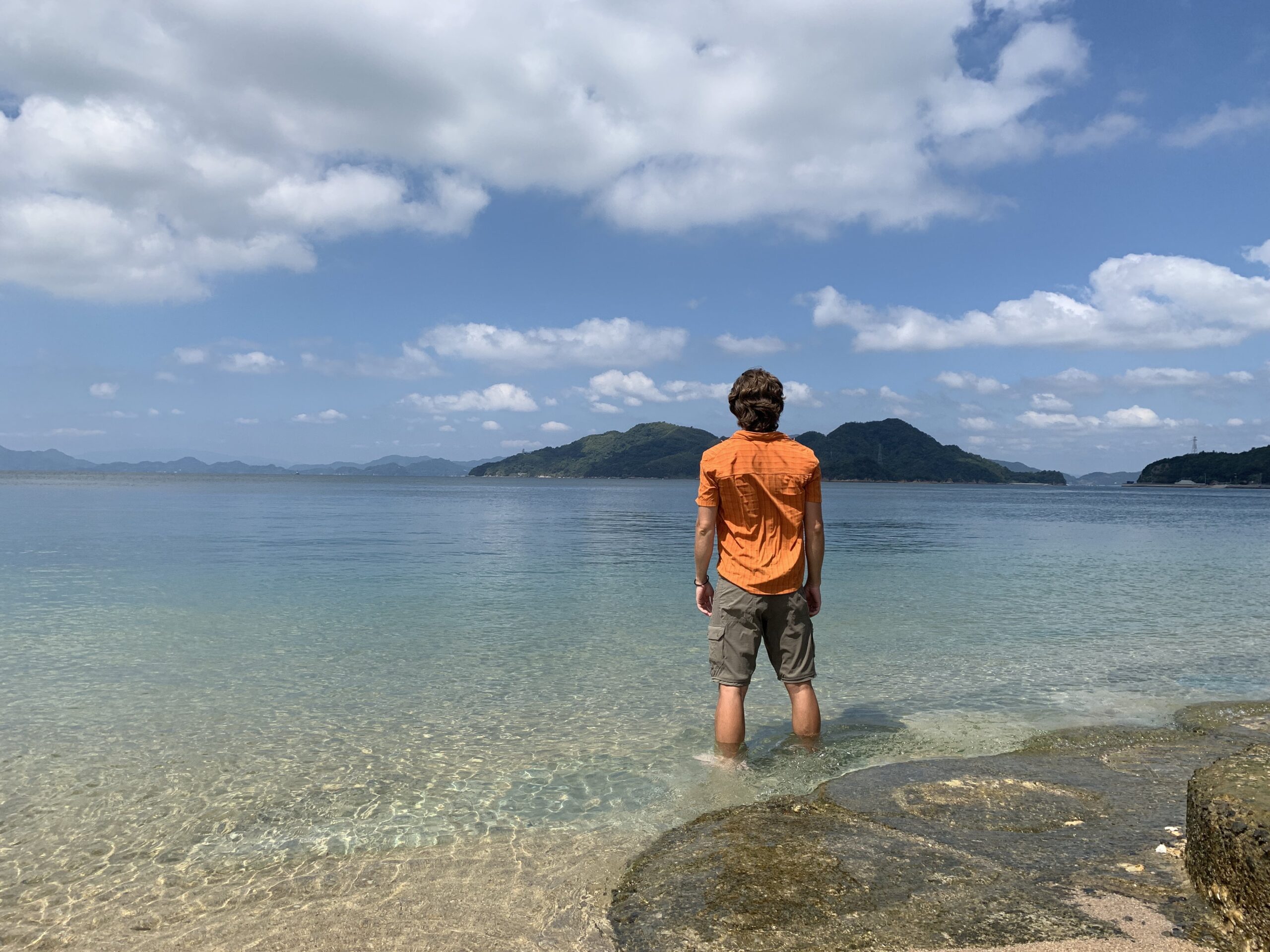
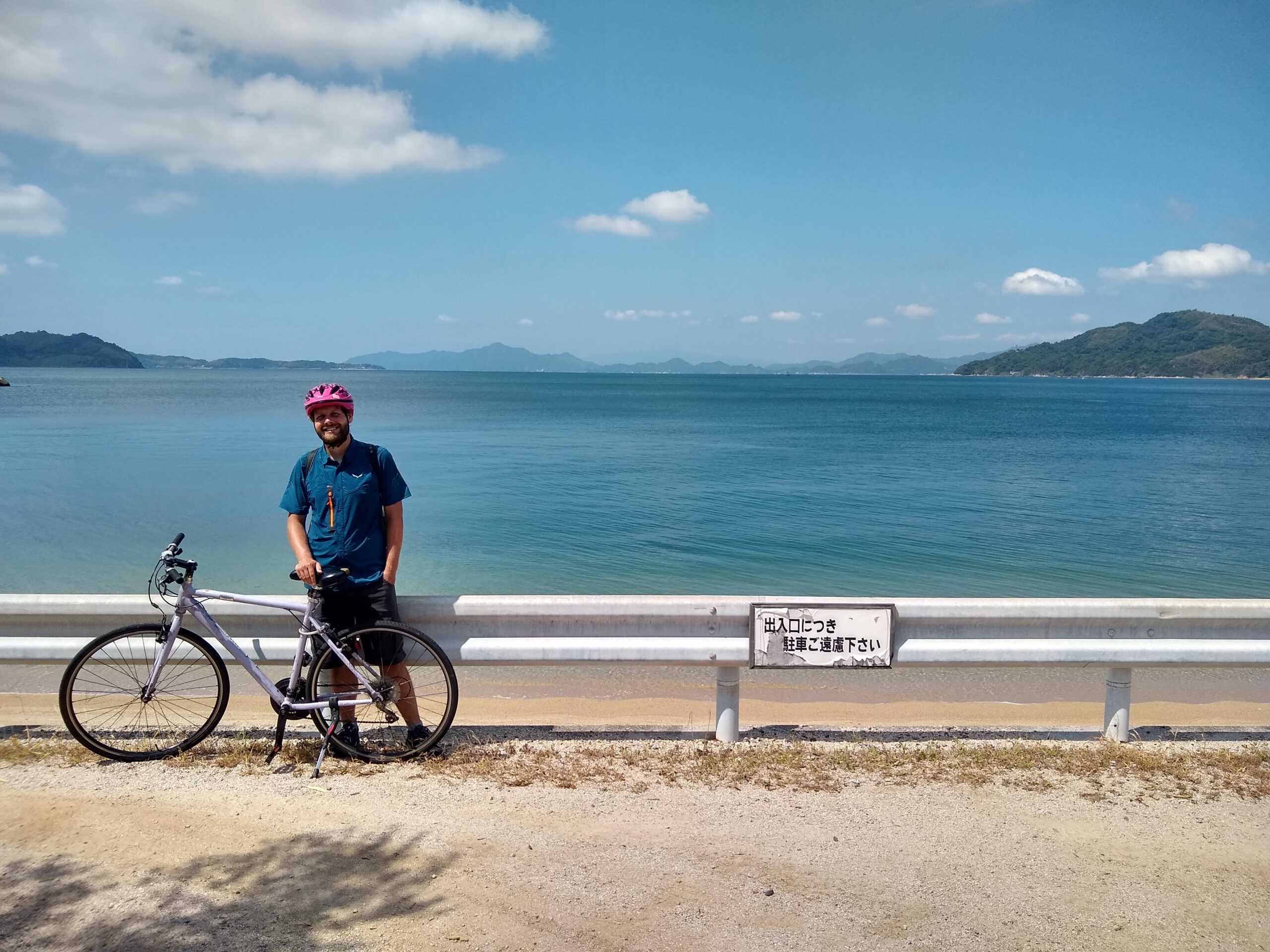
With plenty of daylight left, we decided to stop for snacks and coffee before returning our bikes in Imabari. The waitress turned out to be extremely kind, and interested in handsome American boys, so we had the pleasure of sampling a few local desserts on the house. After dessert we finally returned the rental bikes, and found ourselves hot, smelly, and with nothing in particular to do. A quick googling later, we were on our way to a local bathhouse (Kisuke Hot Springs). Far from the depraved sex houses in the USA, Japanese bathhouses are places of literal bathing and relaxation, sort of like a public spa or sauna that isn’t prohibitively priced or exclusive.
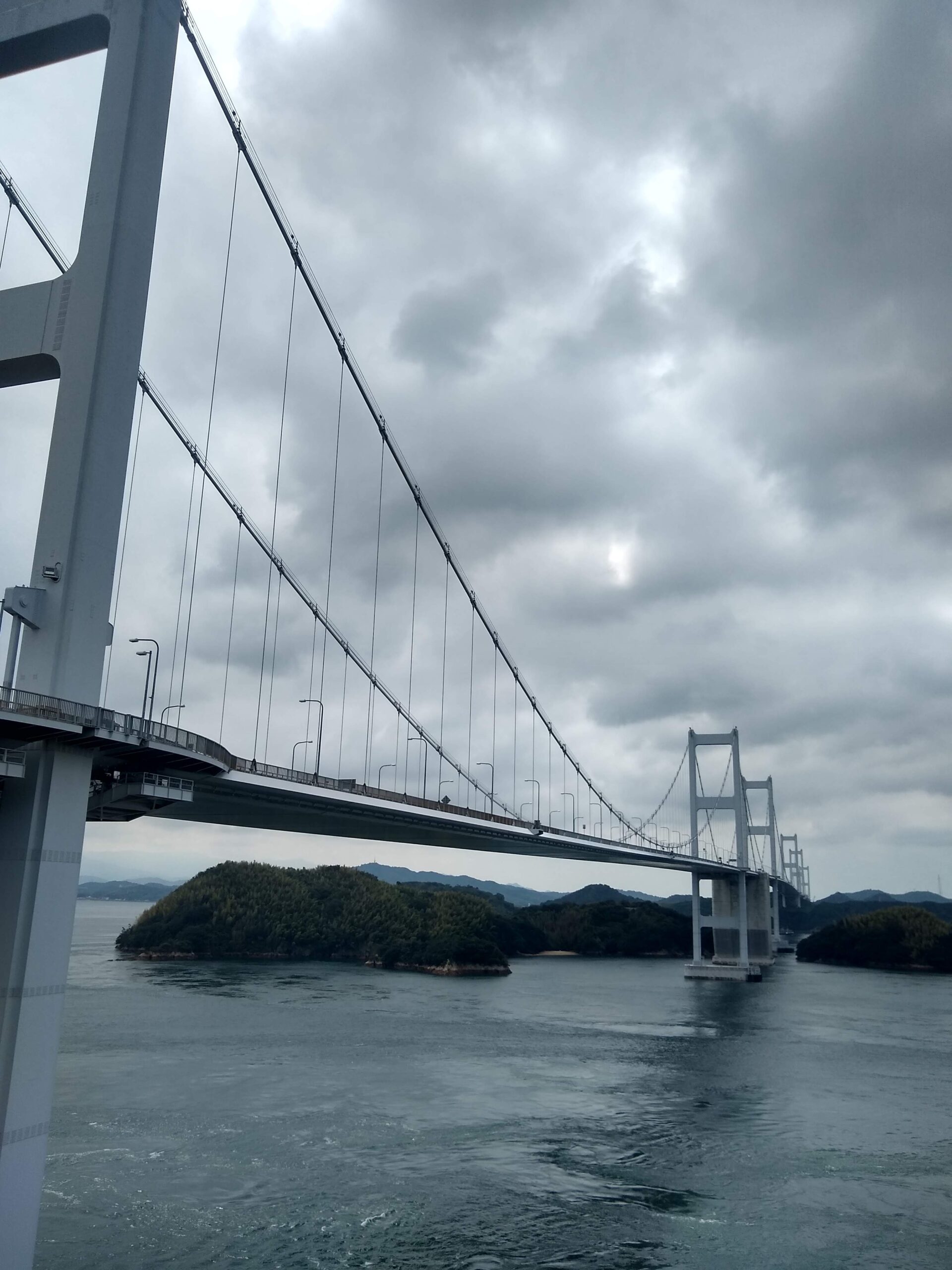
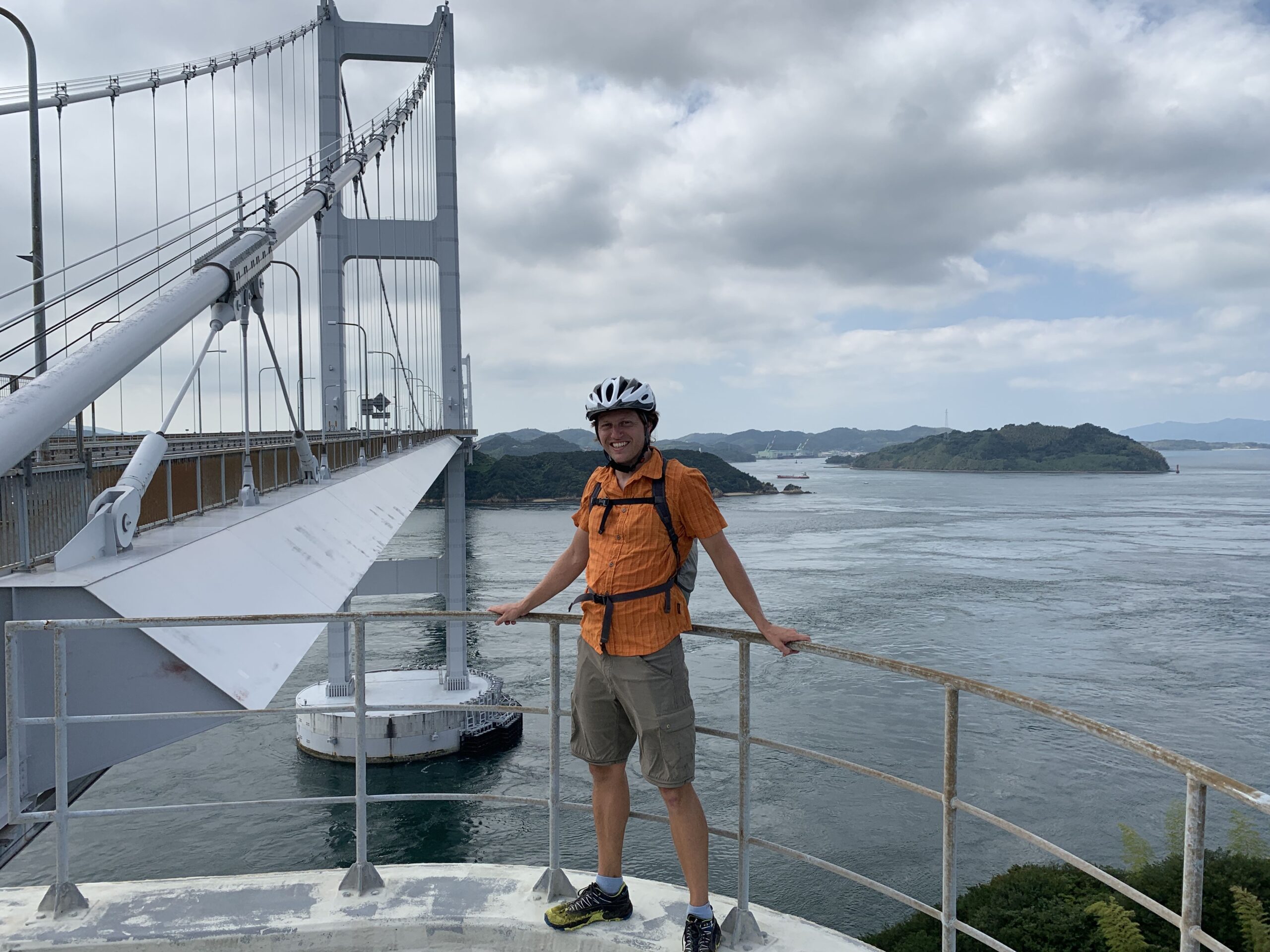
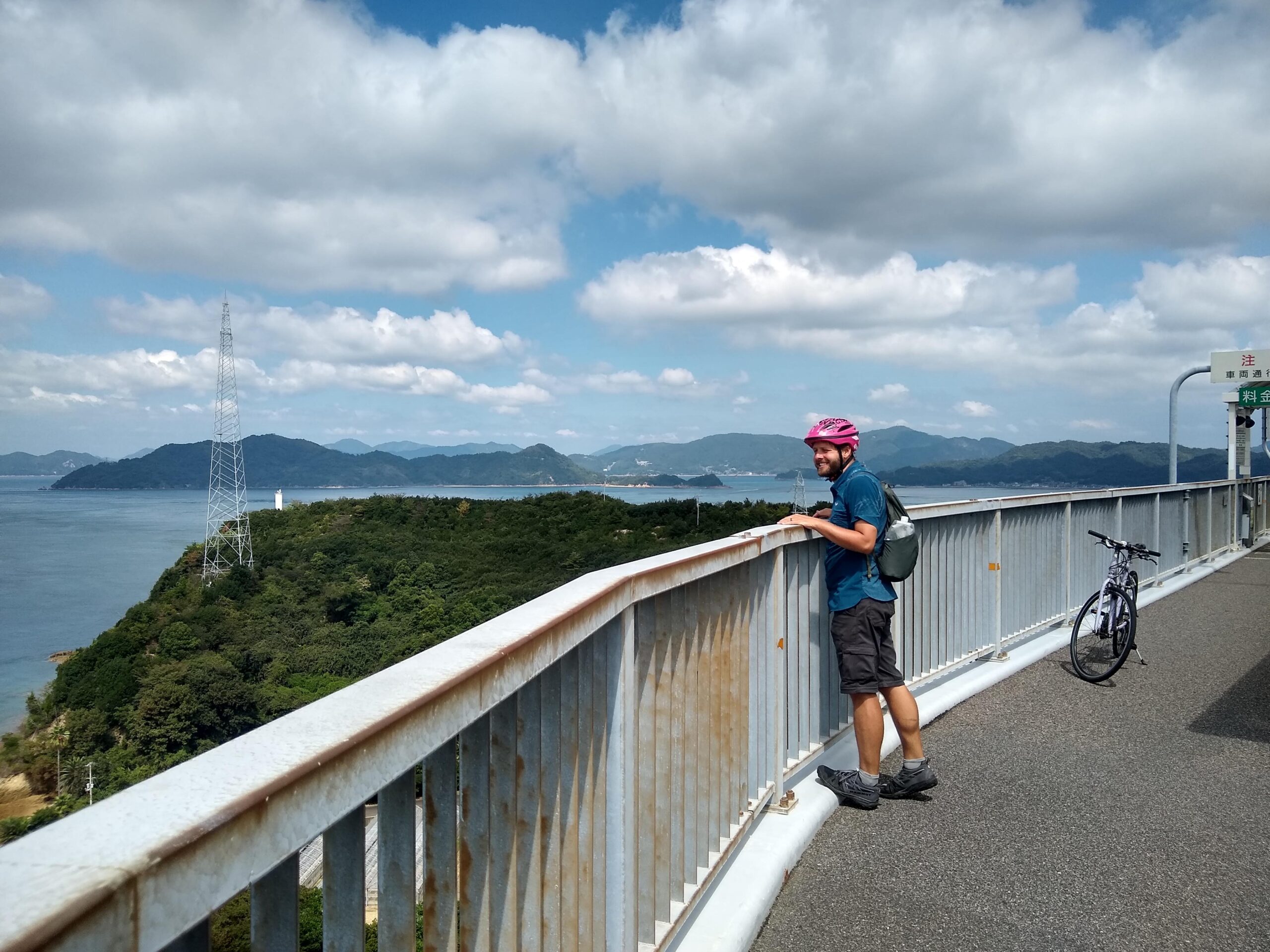
Fortunately, Scandinavia prepared us somewhat for mass public nudity, though something about the Japanese tradition of showering while sitting down just seems unwholesome. I didn’t enjoy putting my bare ass on the public, plastic stool, but they are quite insistent. Anyway, admission came with baggy loaner clothing, so we killed a few hours in the archetypal Japanese lounge after our bath.
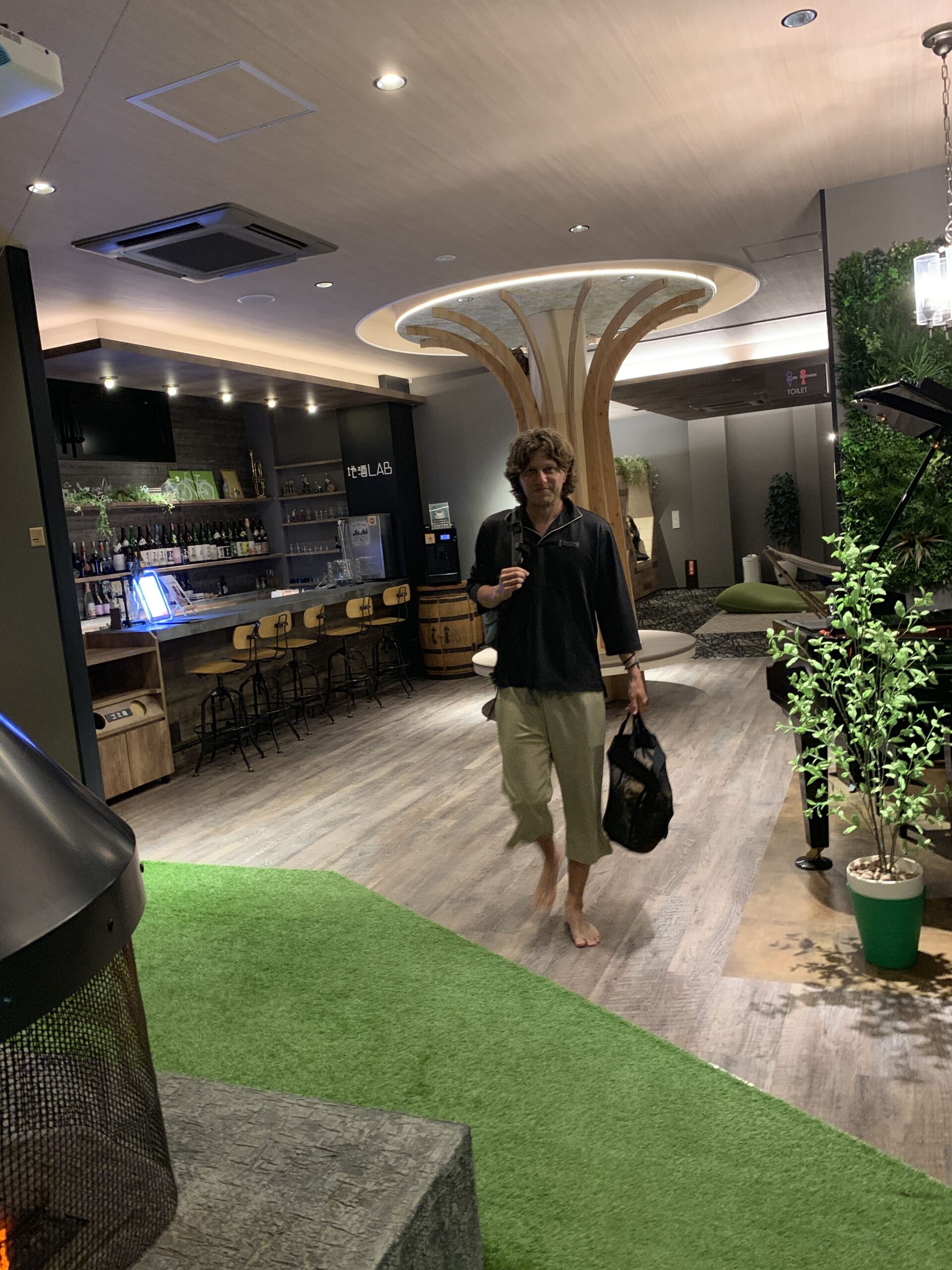
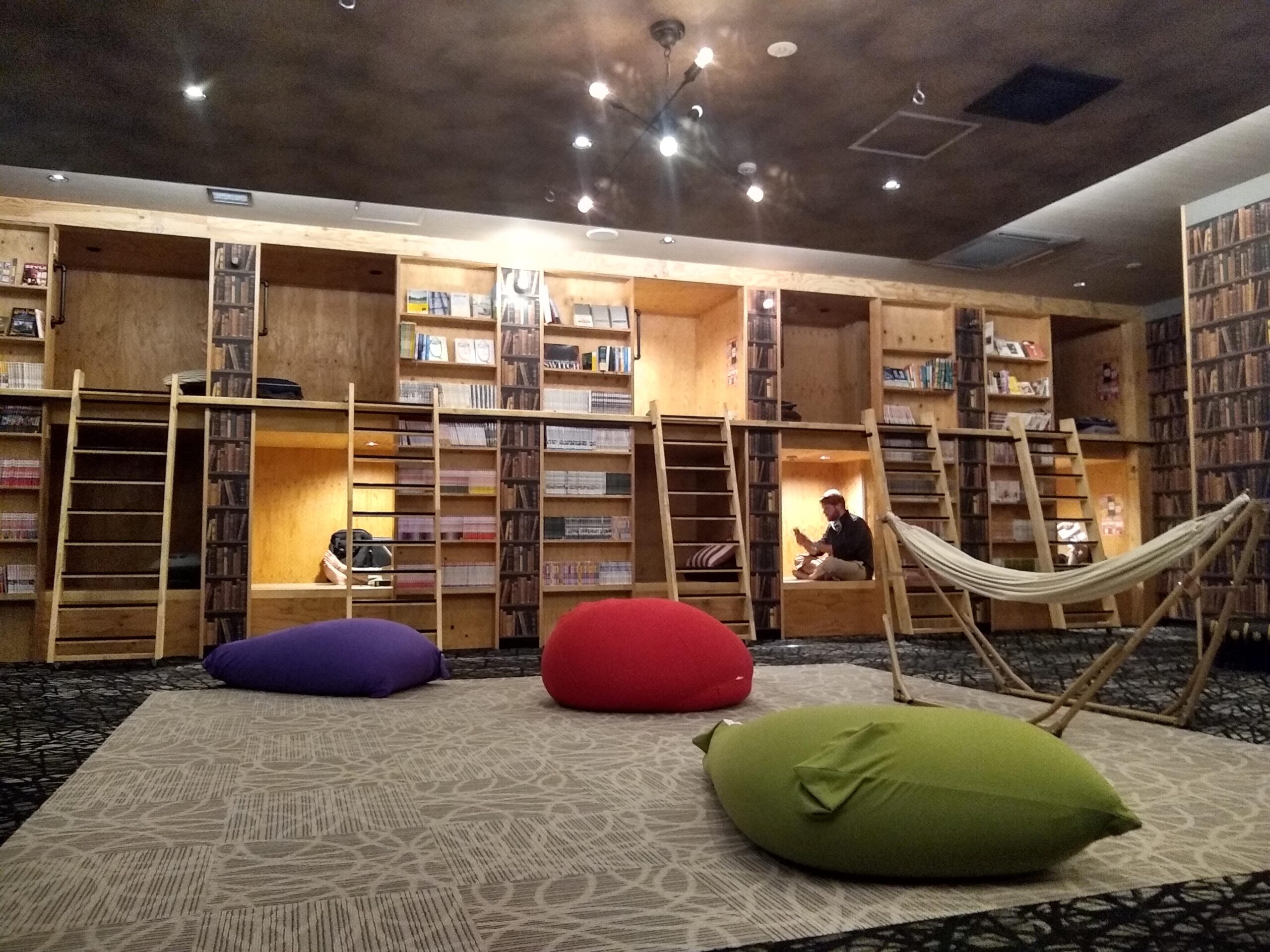
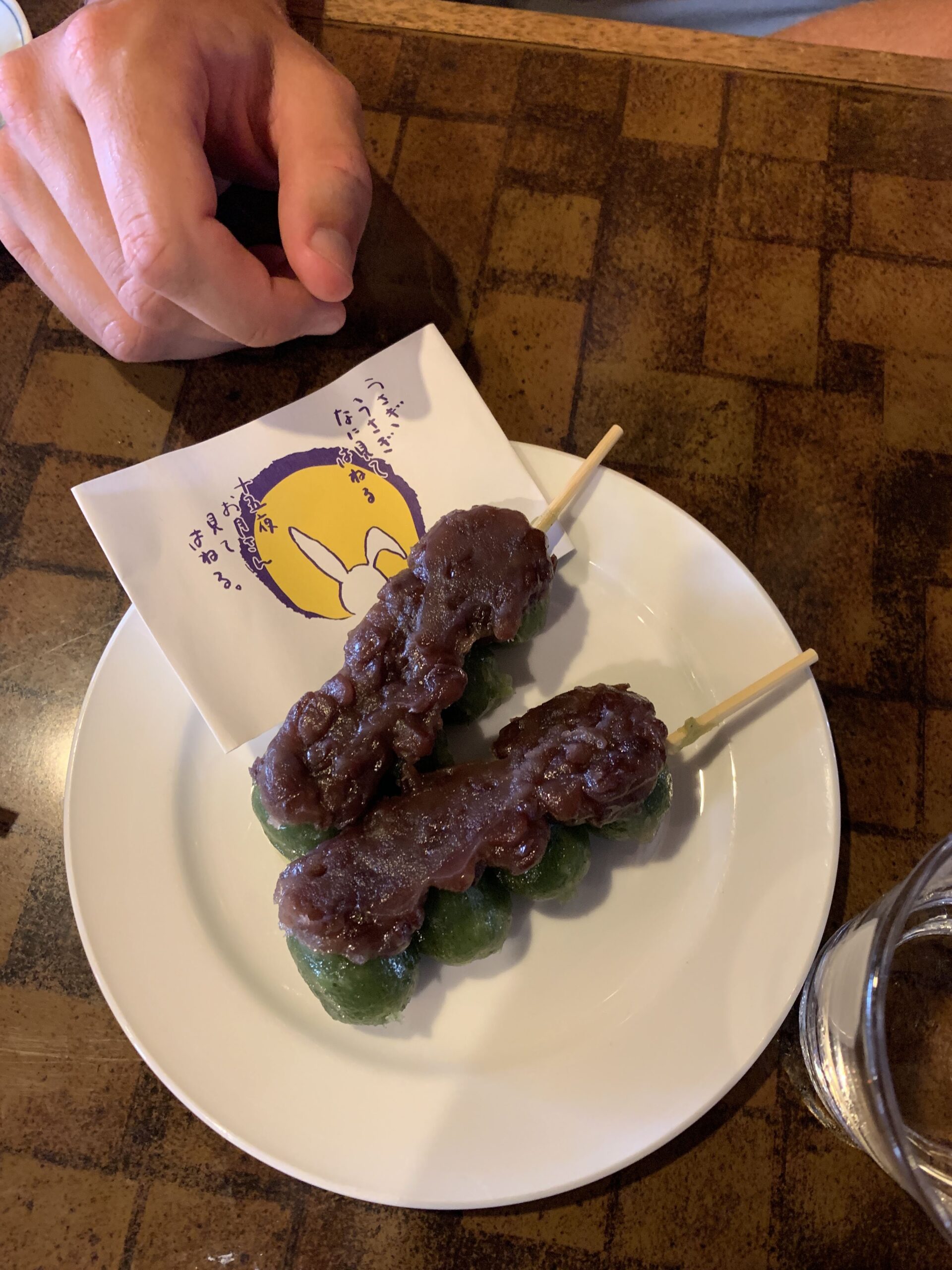
That evening our luggage failed to materialize at the hostel, despite my careful preparations, but it turned out to be merely misdirected and we were united in the morning. Next stop, Hiroshima!
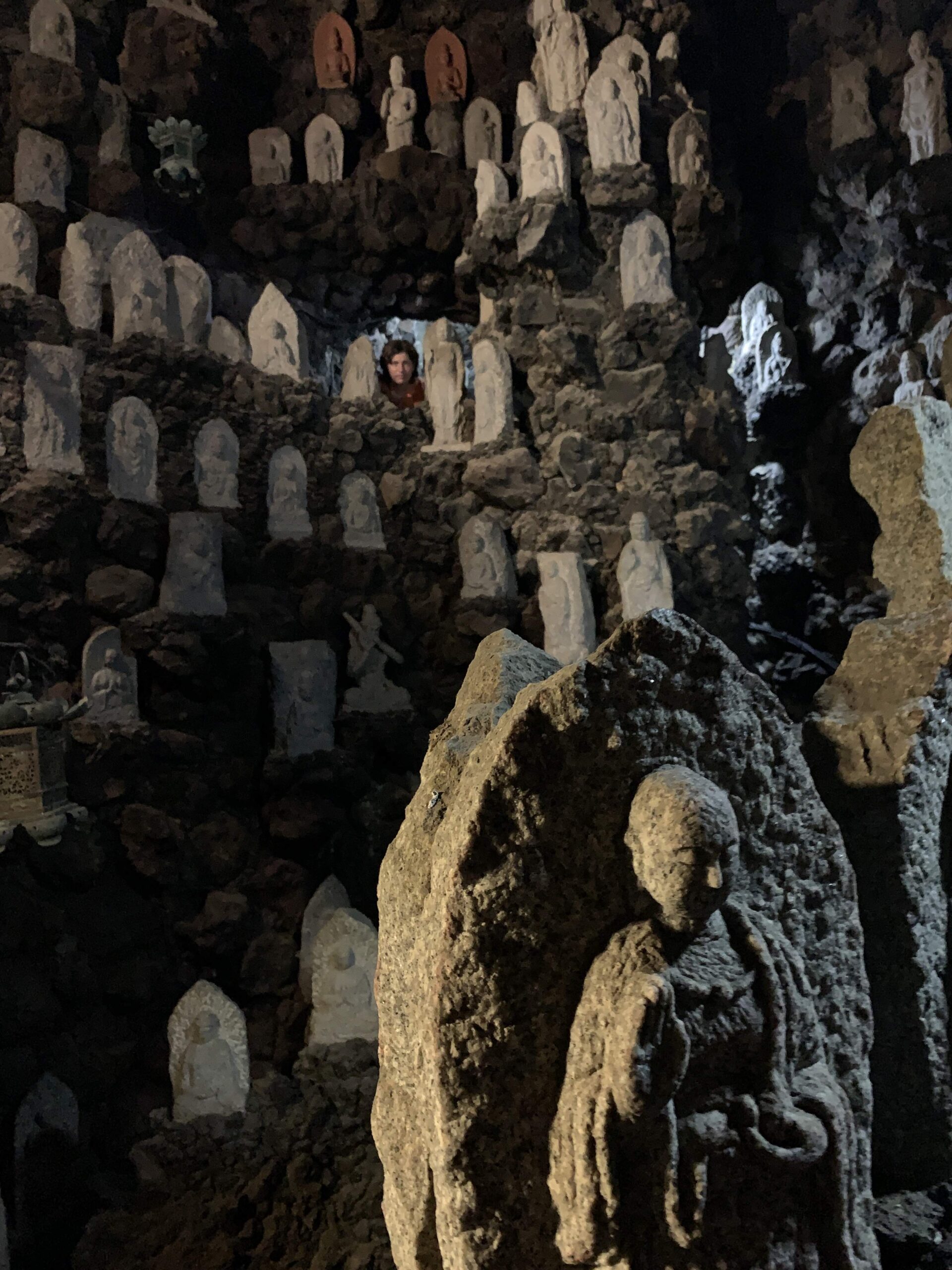

Hi. I’m love suks big dick. My profile here
https://babby.page.link/ZSBk